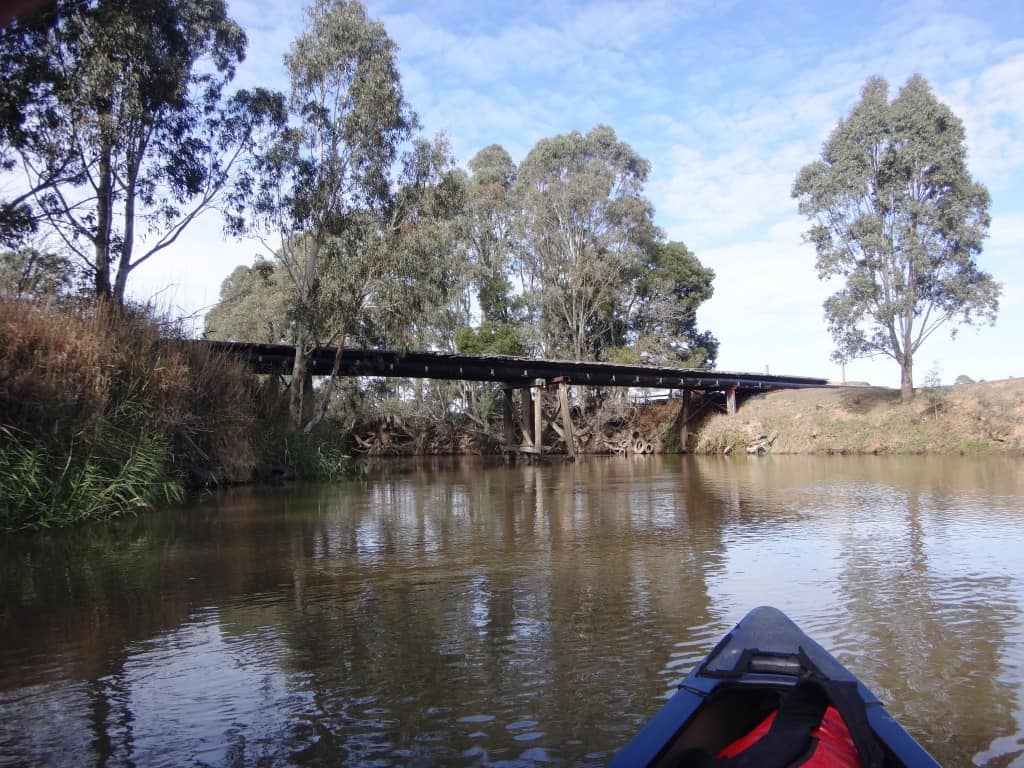
The Lower Latrobe is a delight particularly like now when most of Gippsland’s rivers are too low for a canoe trip. From Thom’s Bridge (Morwell) to Lake Wellington (Sale) is approximately 165 km (by river) or about 8 days paddling at our normal speed (4 km per hour) and five hours per day. Of course it is all flat water.
It can be completed in sections: Thoms’s Bridge to the Tyers-Traralgon Rd (Sandbanks Reserve) 20 km; Sandbanks to the Traralgon Heyfield Rd 20 km; Traralgon Heyfield Rd to Rosedale 45 km; Rosedale to Longford 60 km; Longford to Lake Wellington 20 km. The Rosedale to Longford section can be shortened by a day by putting in at Crooks Lane bridge off Settlement Rd, Kilmany South which is what we did on this occasion.
This section is arguable the most scenic: the river is bounded by a strip of magnificent riverine gums on both sides, though there are some quite large sections of forest too. Bird life is particularly varied and plentiful. There are vast numbers of perfect camping spots along the river.
We canoed this section in two five hour days with an overnight stop. It would have been better to have done it over three days and to have spent more time exploring and fishing but we had to be back. The Vicmaps Rosedale South and Sale South 1:25,000 are useful along along with the PDF Maps App to establish your exact location.
The river banks are often quite steep until the river splits (take the right fork). From then on they are almost always vertical and there are only 1-2 spots you can exit the river at all in that 2 1/2 hour section! The best of these is on the left where the river used to rejoin about half an hour below the junction. Don’t pass it up. The last good flat camp is on the right at the junction.
For our trip the river height at Rosedale was .95 metres. The river was in a very low ‘flood’. It had risen from .75. The Catchment Management Authority had been letting water out of Blue Rock Dam for environmental flows. I would say the river would be canoeable at .75 metres but would be very much slower and require more careful negotiation of the many snags of fallen trees along the route. It might be a good idea to carry a buck saw in the boat with you as you might not be able to get out on the bank to portage if it became necessary. ( I had one of these but didn’t need it except to make tent poles.) The banks are heavy clay and slippery.
All the photos are in approximately the order that you will see things on the river:
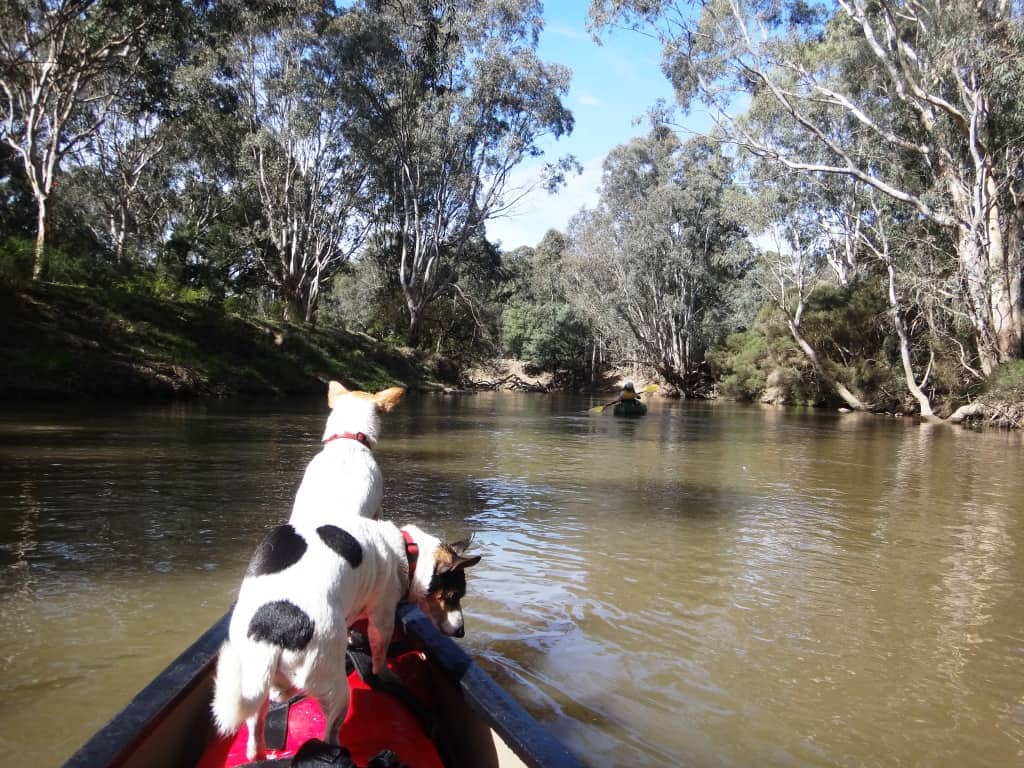
There are many magnificent riverine gums.
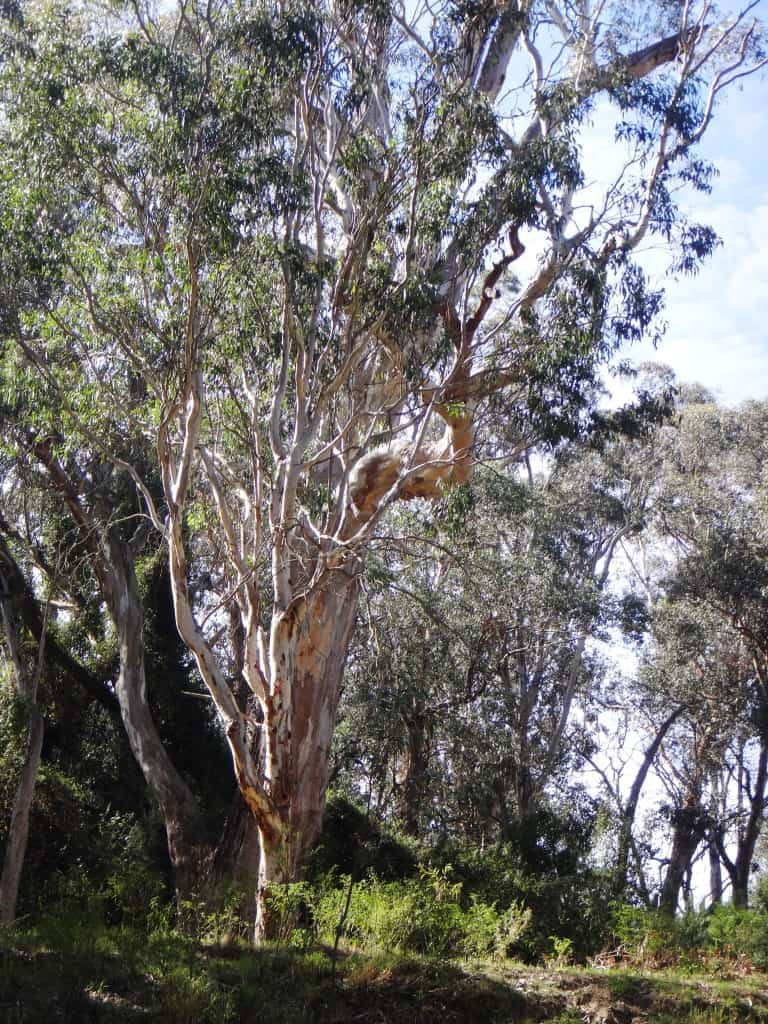
It is extremely rare to have a glimpse of ‘civilisation’
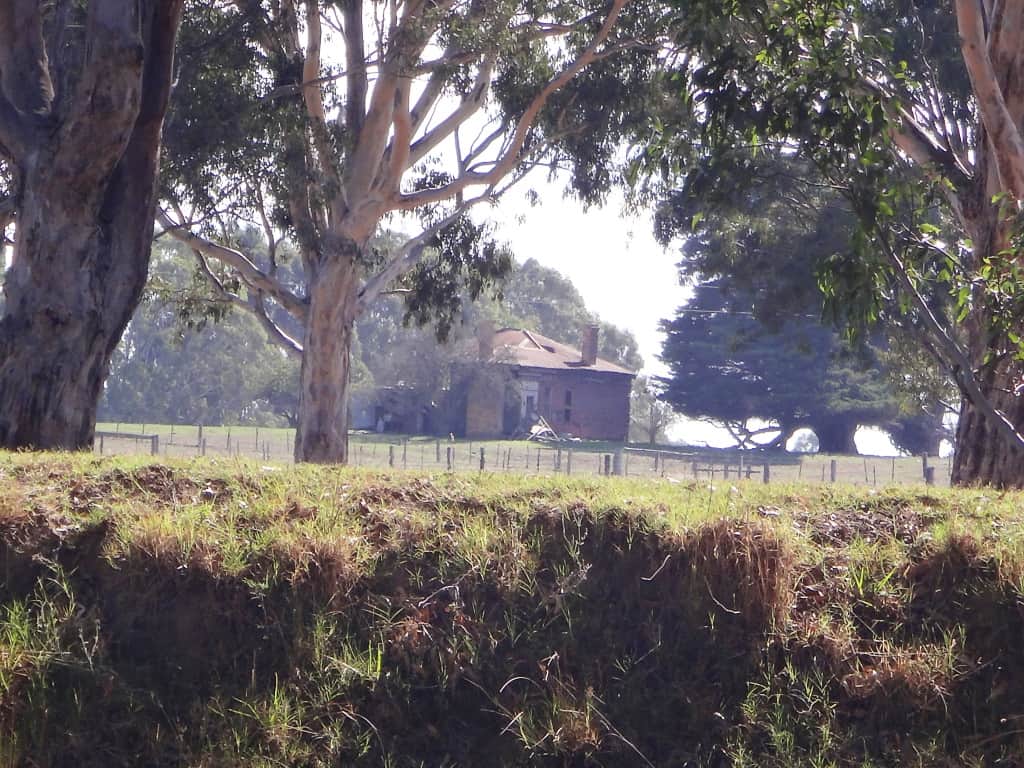
Mostly you just cruise along between parallel strips of gum trees.
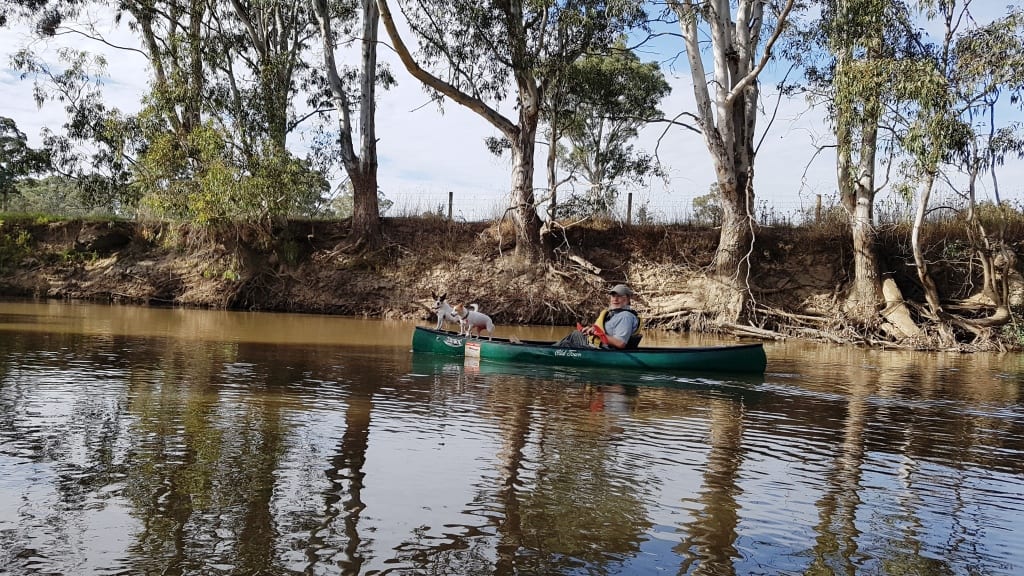
This is the most silent peaceful river I have ever canoed – except for bird song.
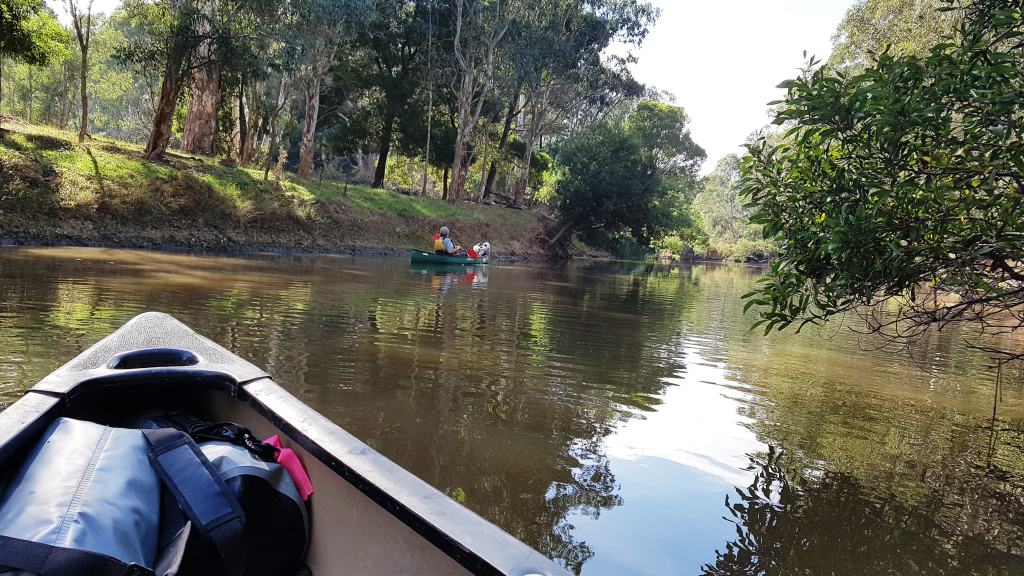
Very serene.
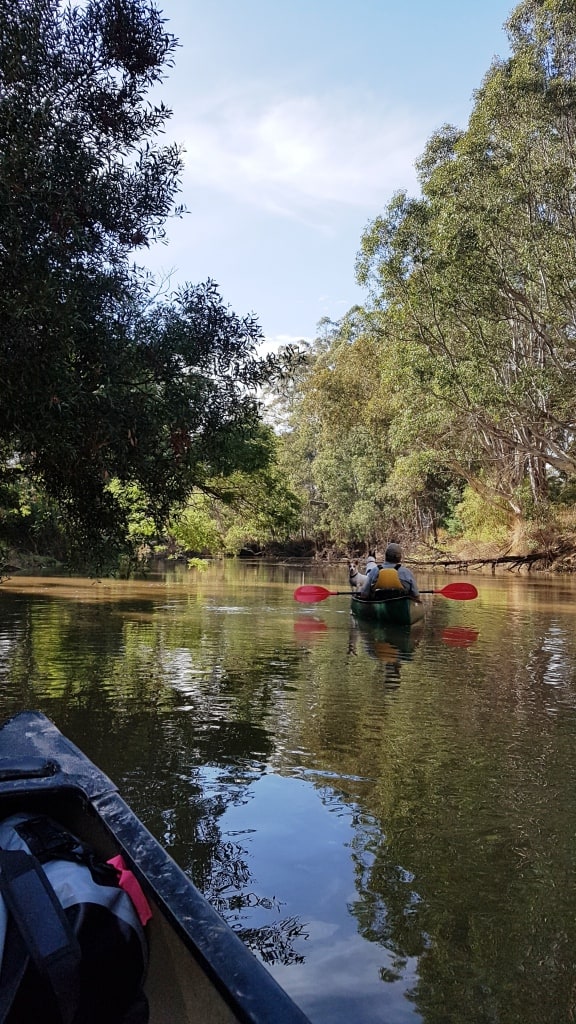
And relaxing. The temperature was the mid 20s C.
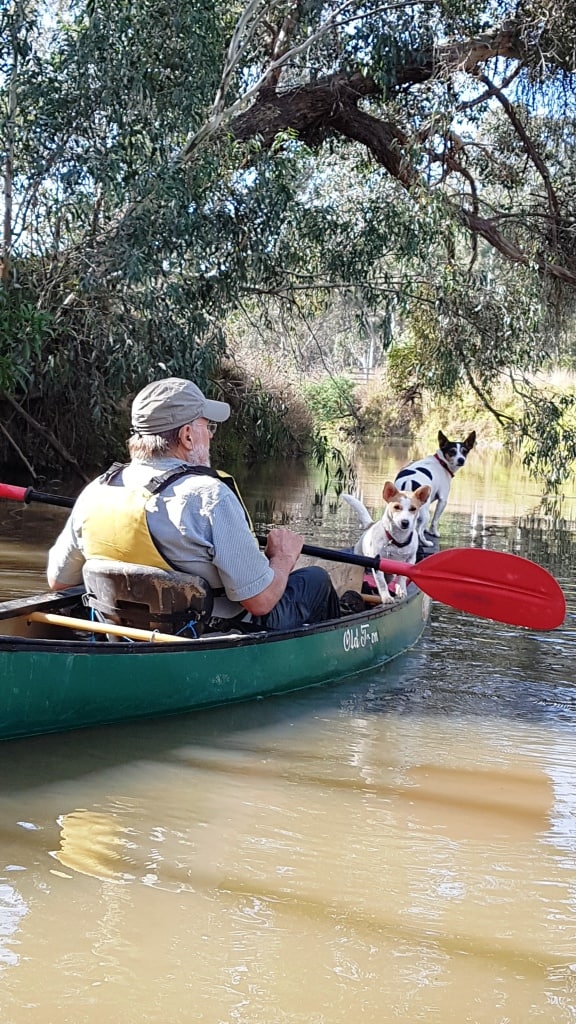
So many magnificent specimens of timber.
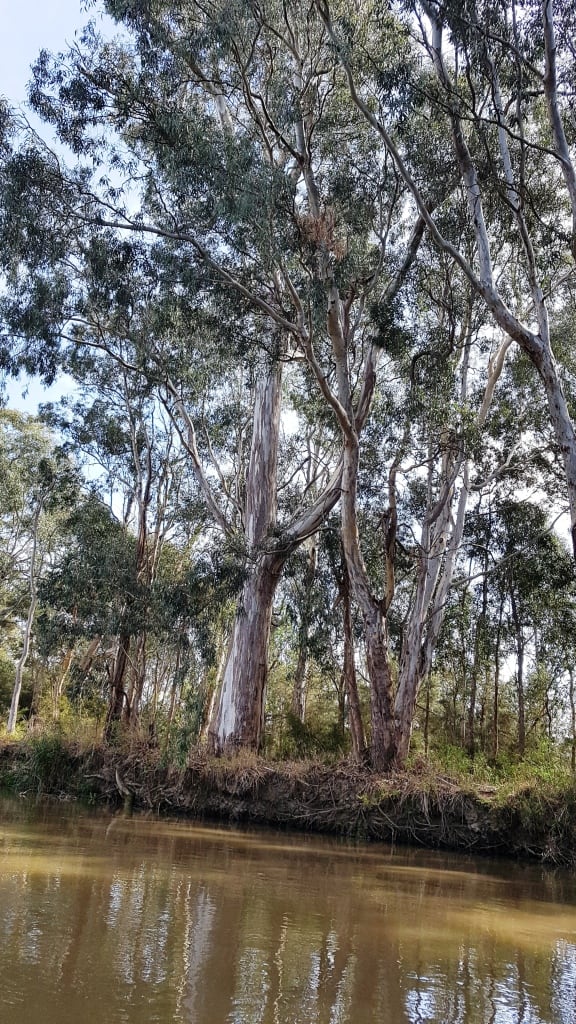
Just gliding along.
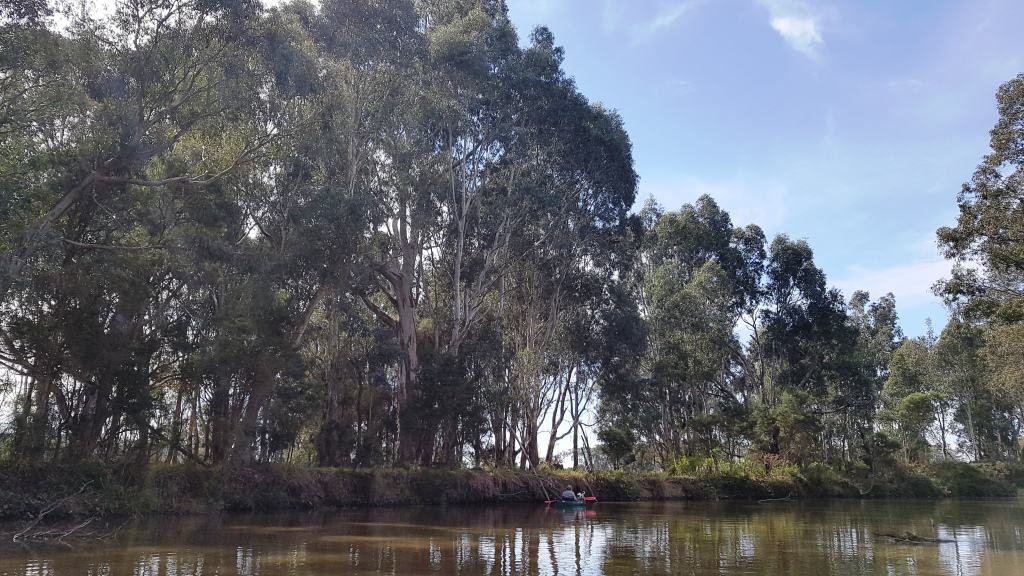
Time for lunch on this sandbar about an hour after starting out.
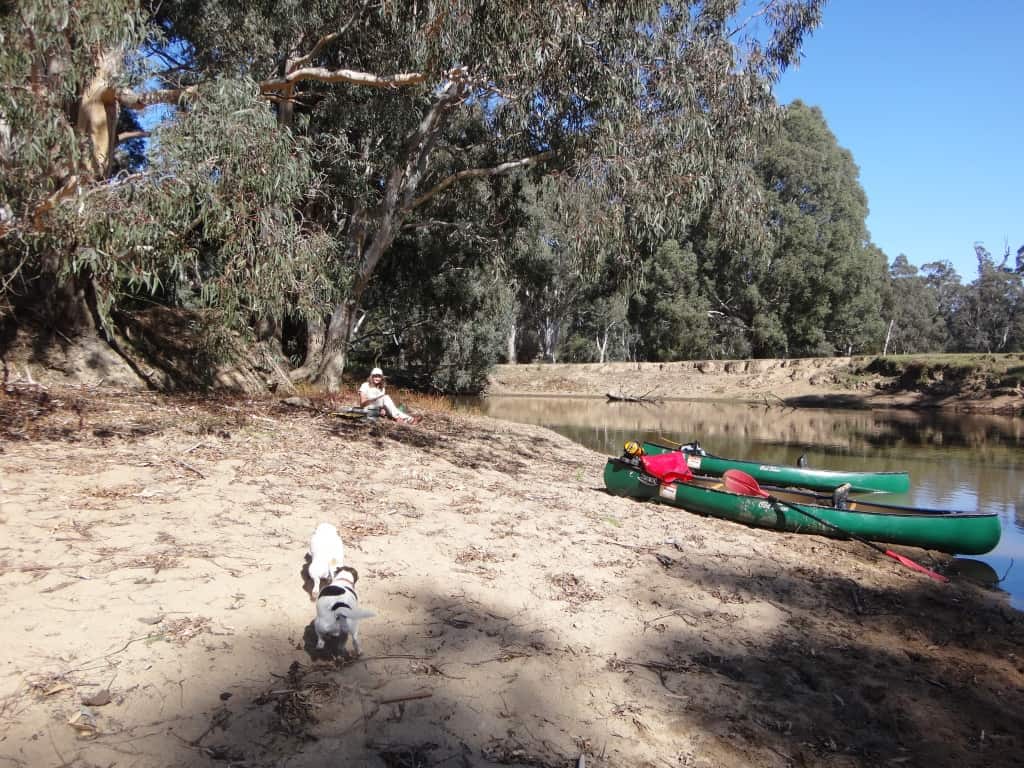
Lunch view.
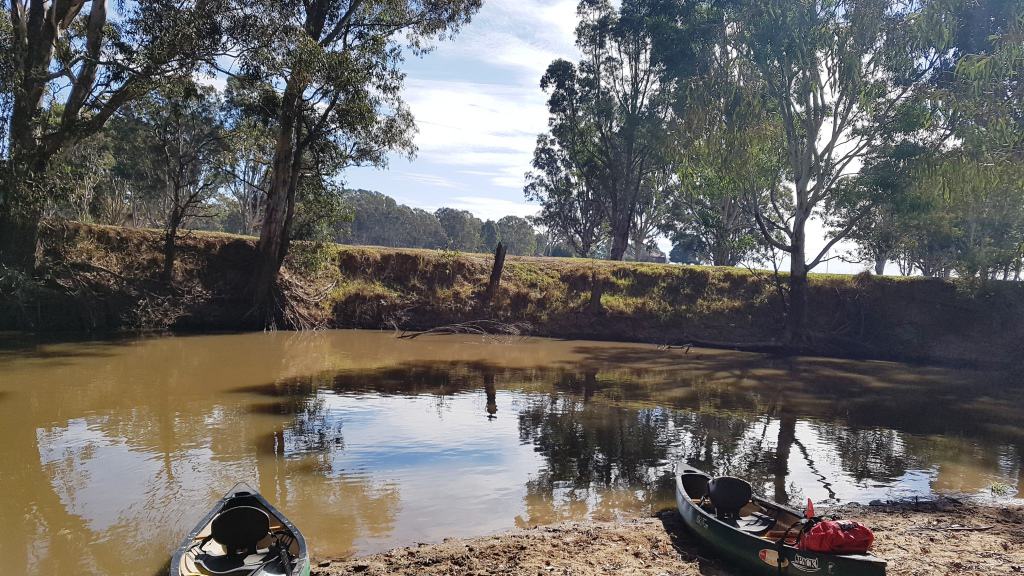
Then we are off again. The dogs are anxious about Della negotiating a tricky bit.
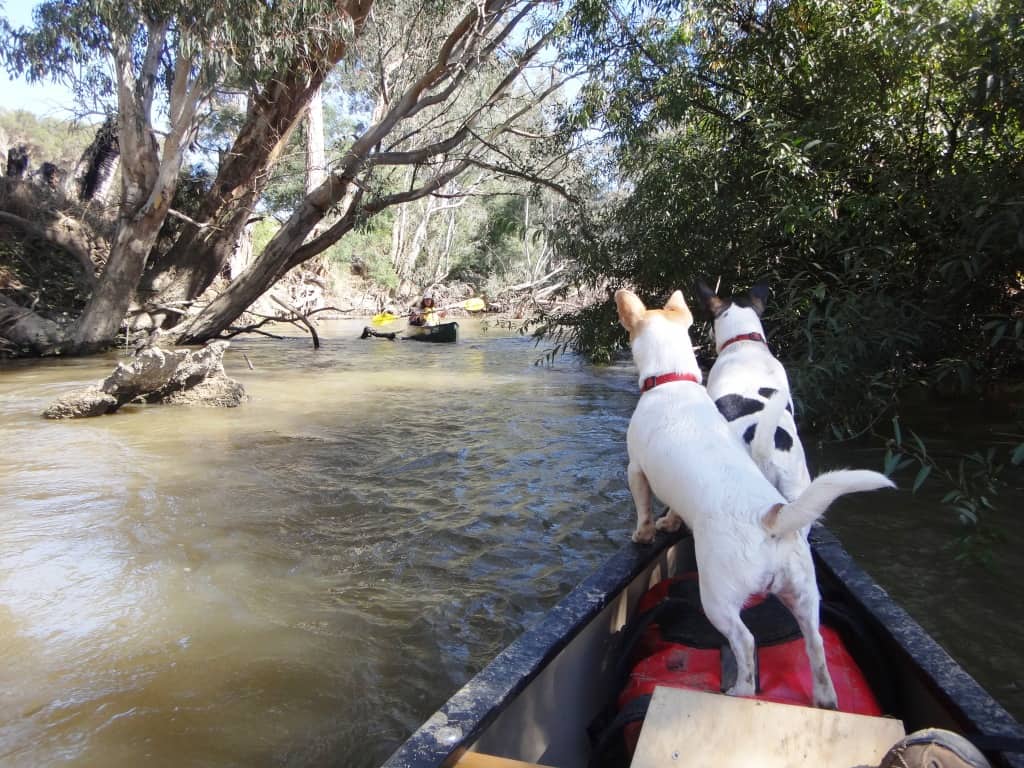
But she makes it easily. She is a veteran of many such canoe trips.
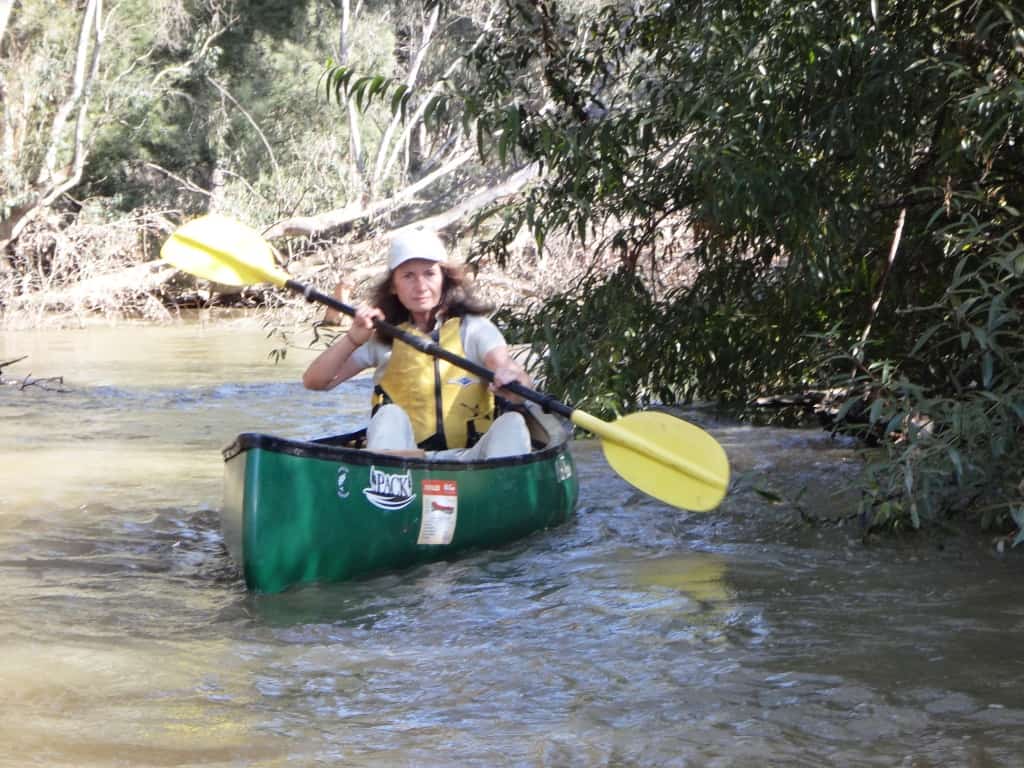
I think you could do a photo study on historic pump houses.
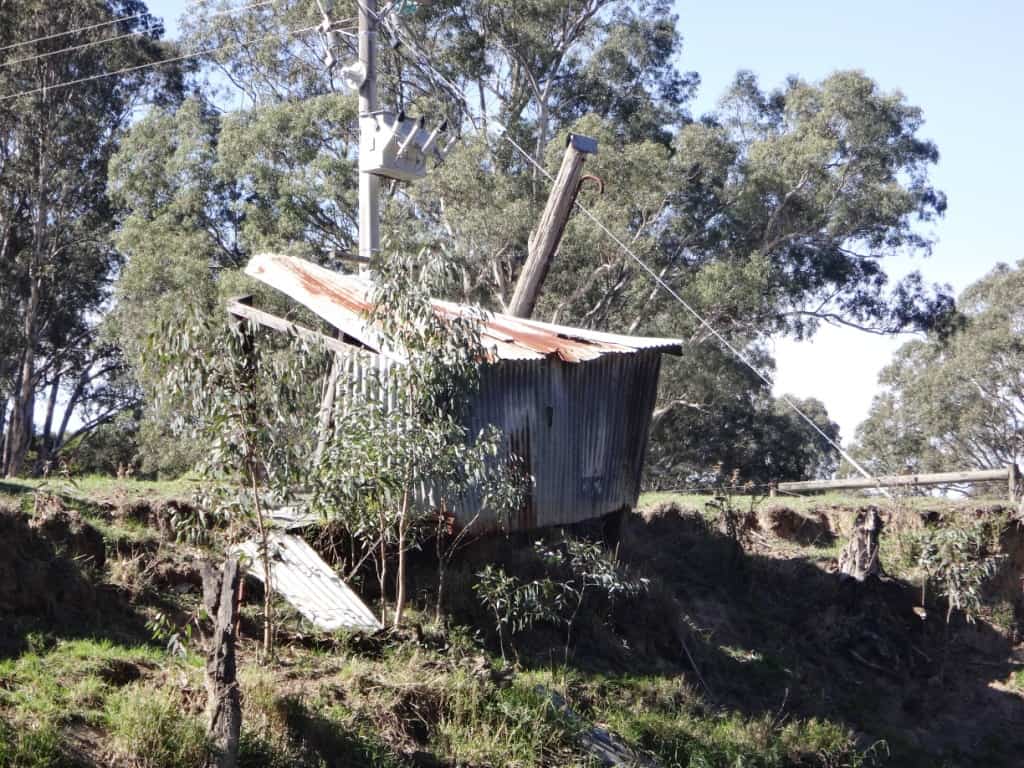
What a beauty this one is.
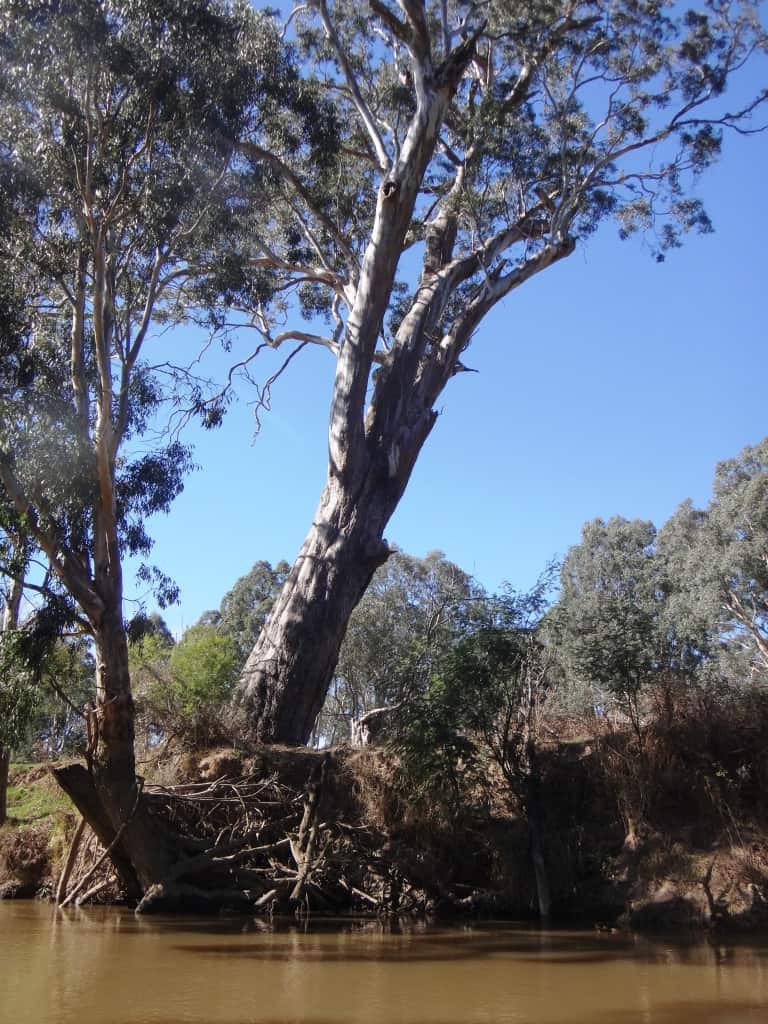
And this. Must be ancient – you can see where earlier people have cut a canoe from the bark.
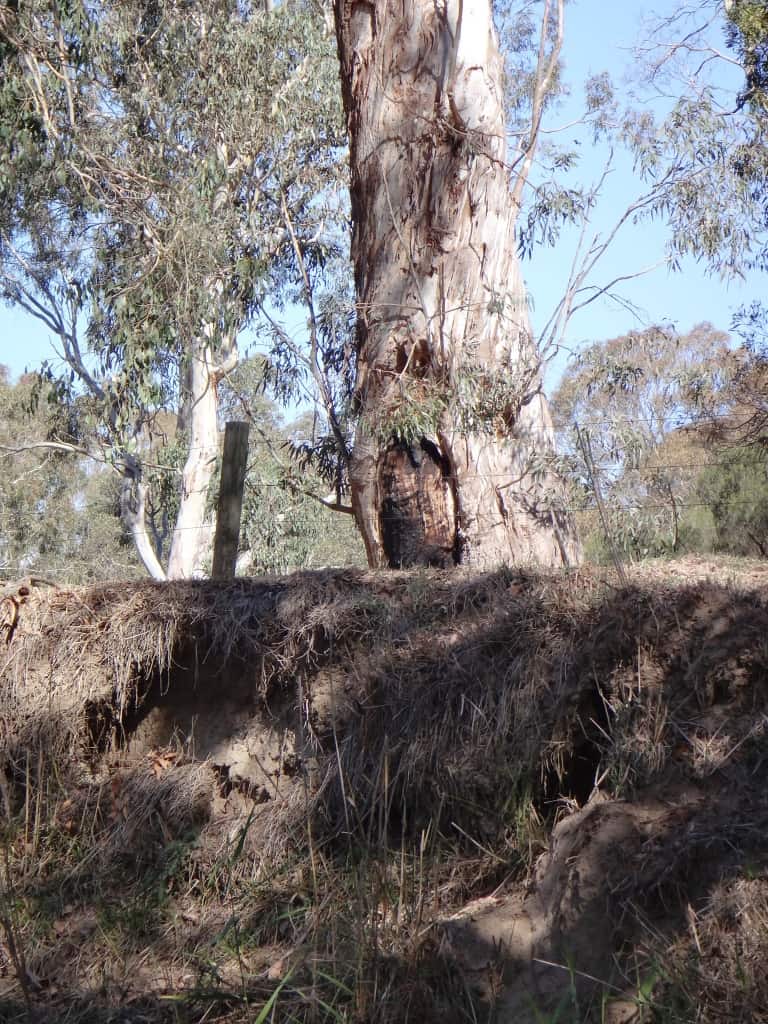
In its top a magnificent wedged tailed eagle.
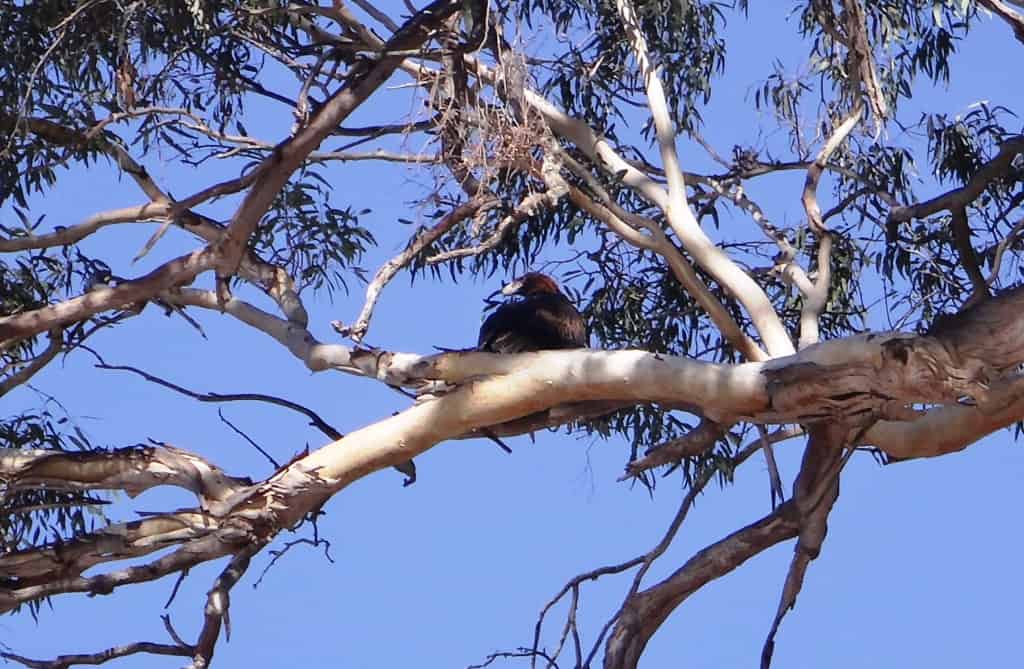
There are plenty of grassy flats along either bank.
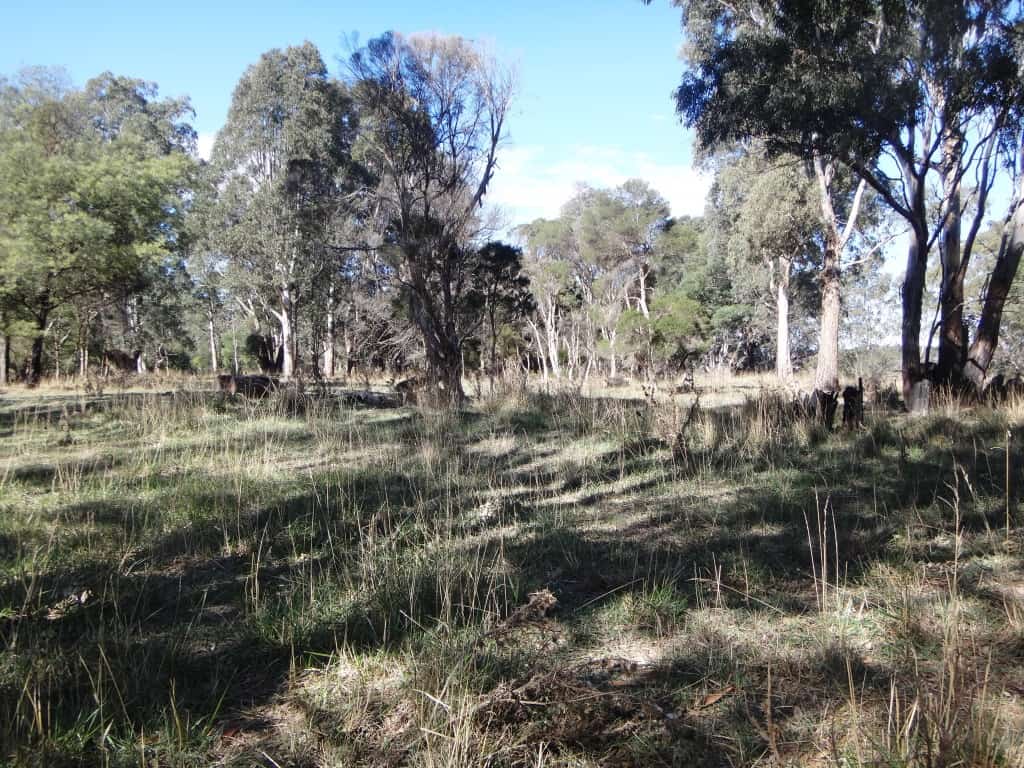
And sandbars to climb out on.
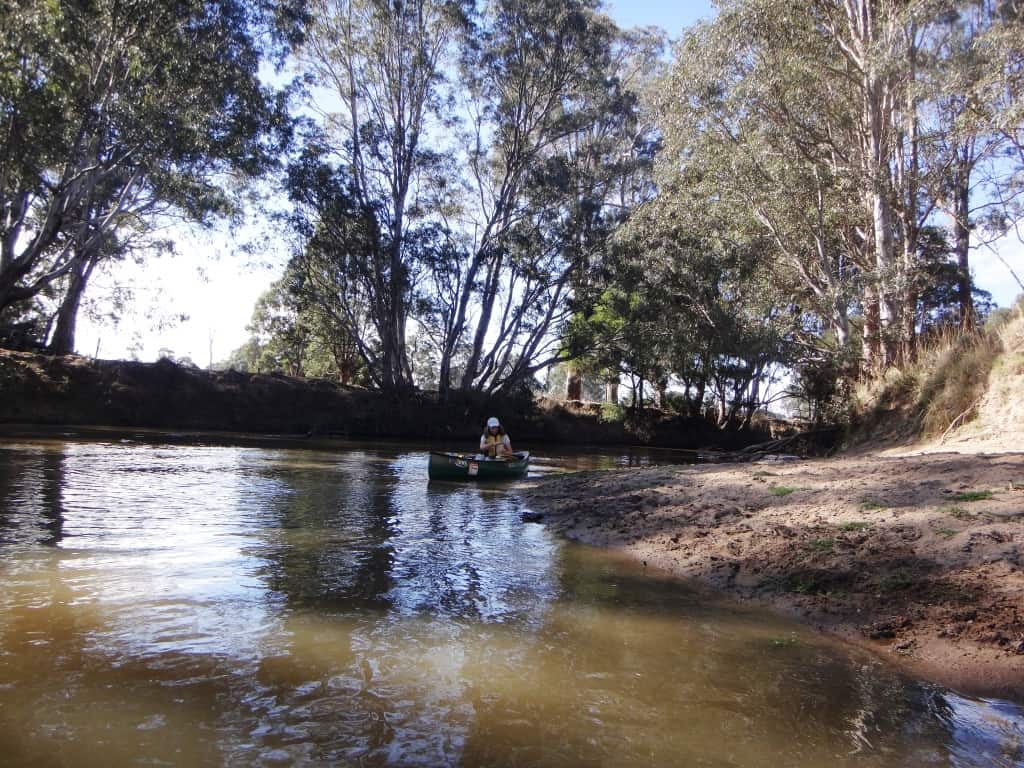
Lots of things to attract your attention along the river.
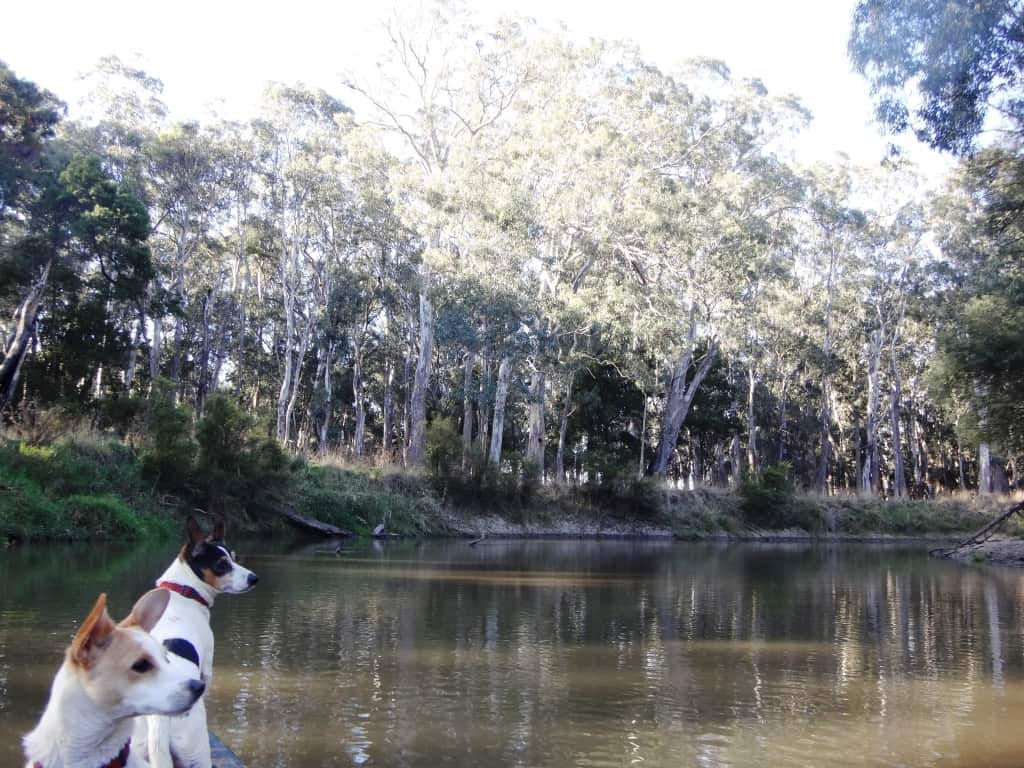
You need to be careful of the snags though so that you don’t end up like this cow.
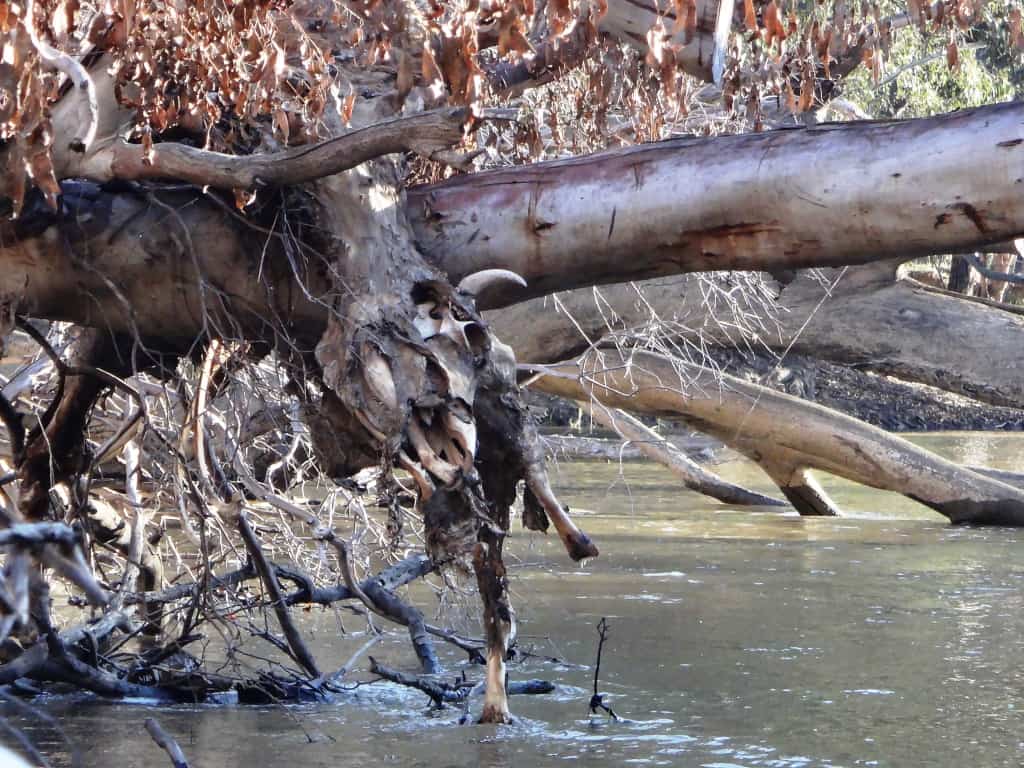
What a beauty!
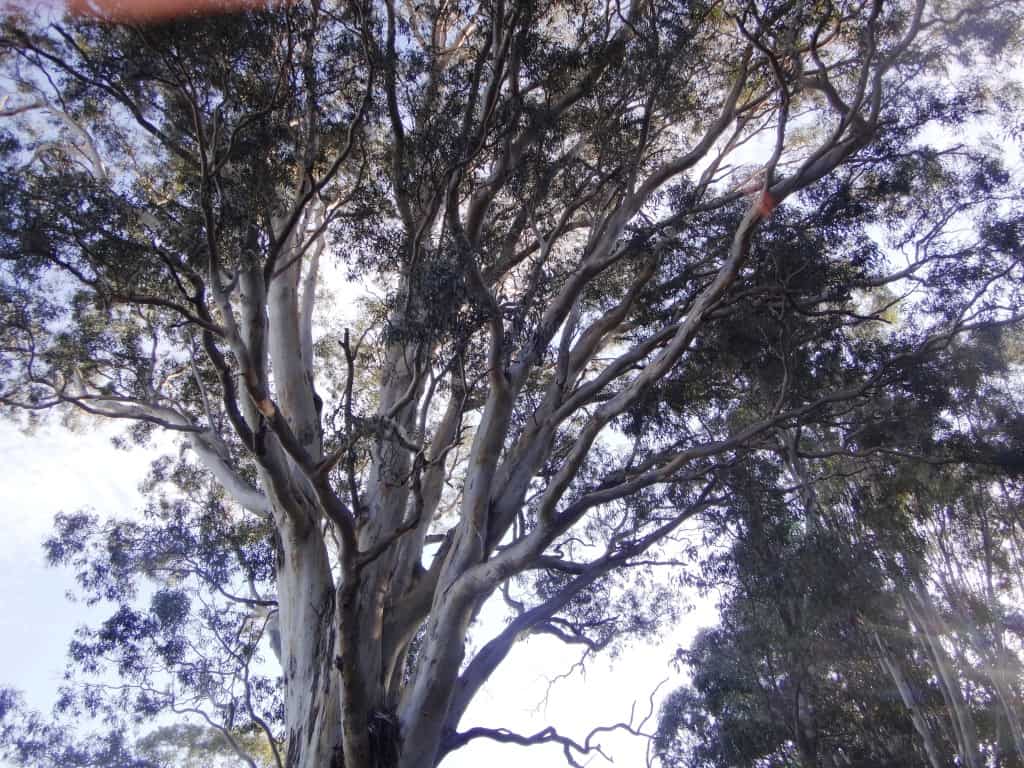
Our camp site for the night about half way on the right. There was a section of forest about a km above this on the left where I should have stopped.
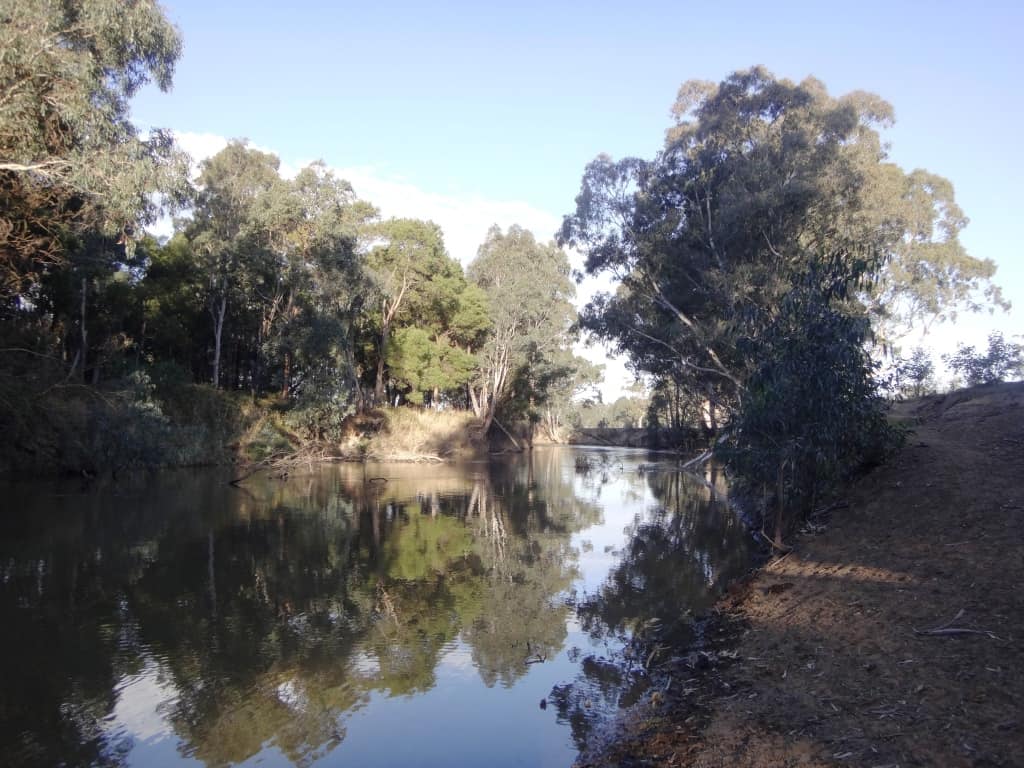
Honey photo bombing the view out the front door of the siligloo.
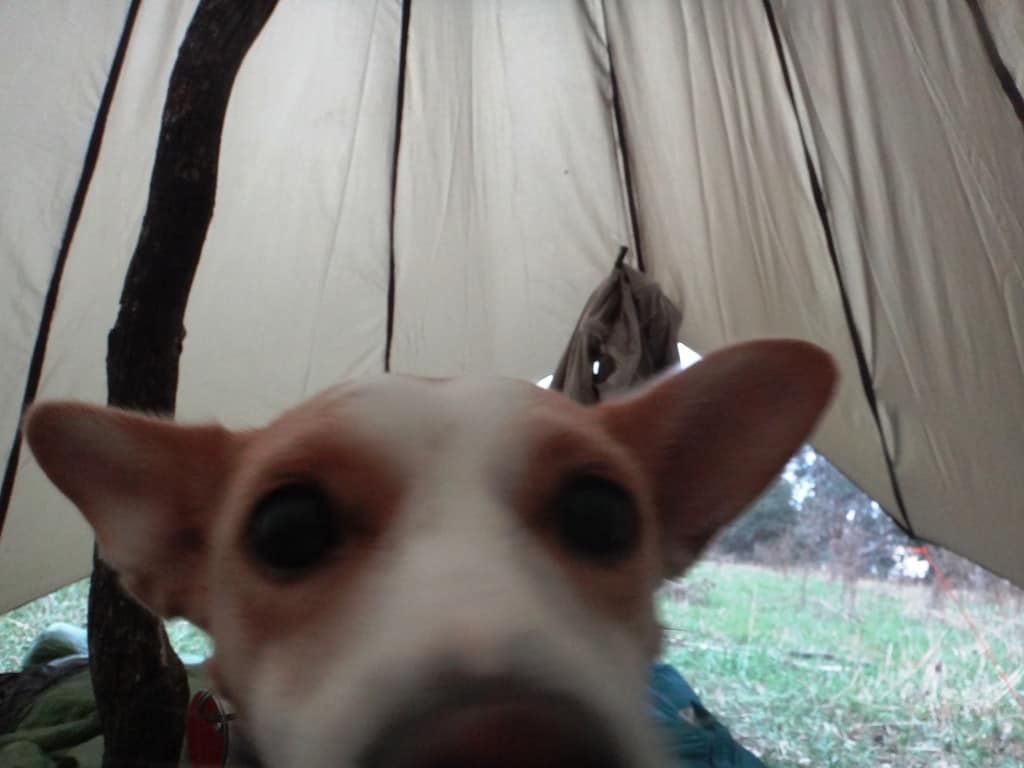
Time for a morning coffee.
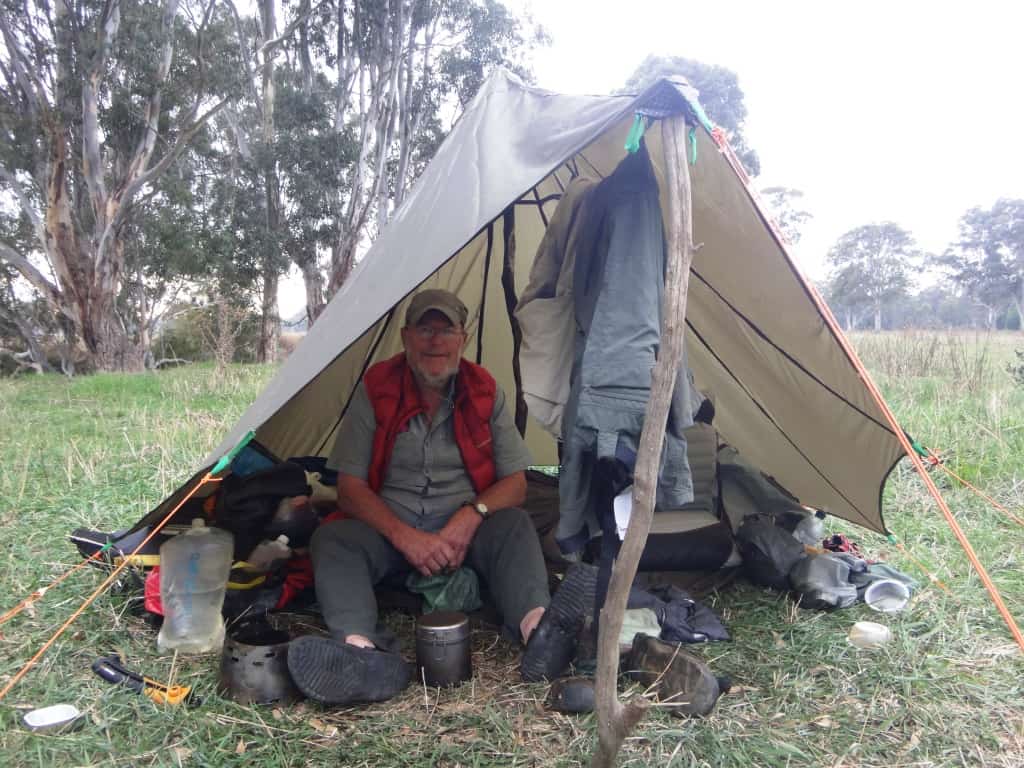
Off Spot and I go again.
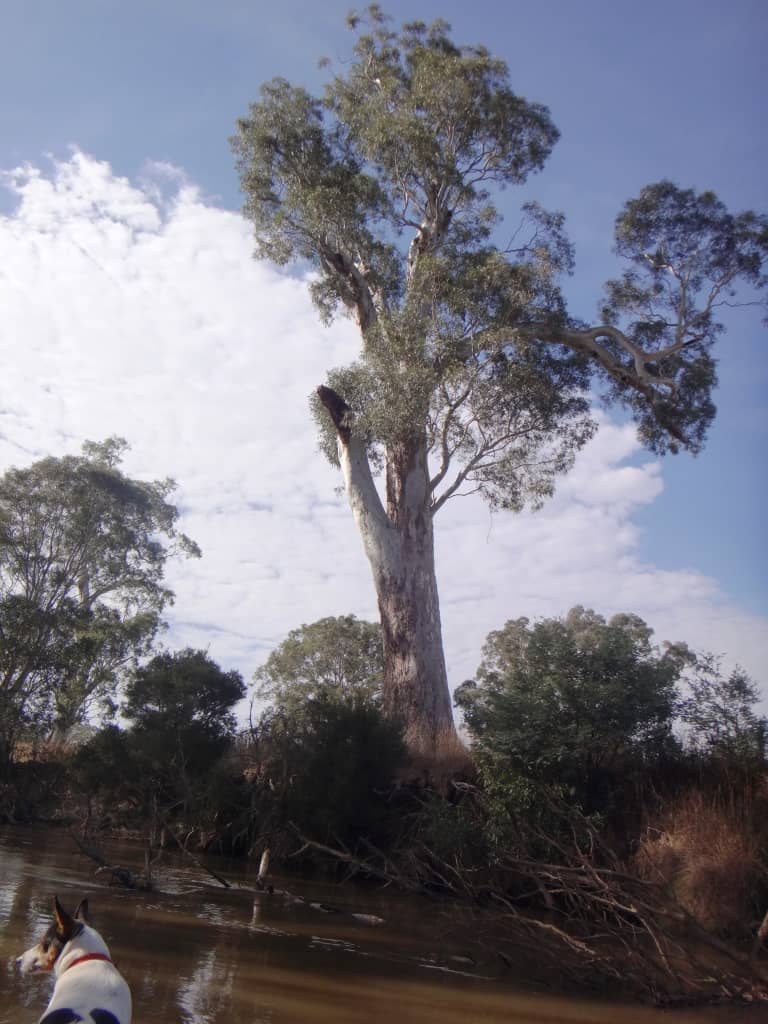
Lots of bird life. We were seldom unable to hear or see one of these noisy sulphur crested cockatoos.
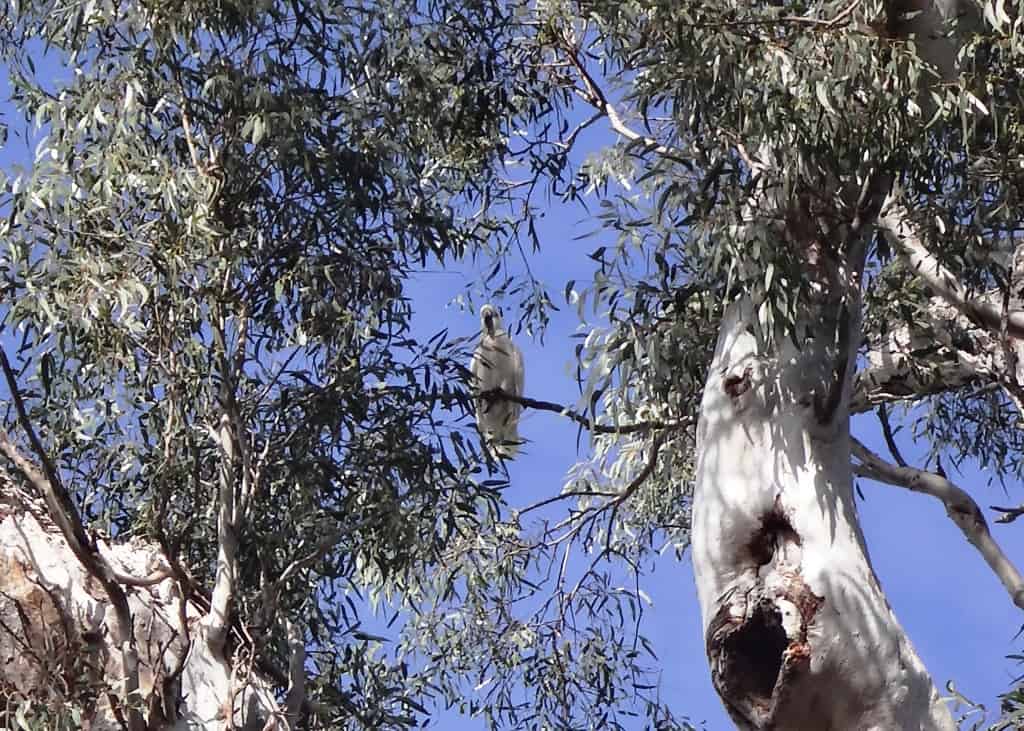
So many beautiful serene straights.
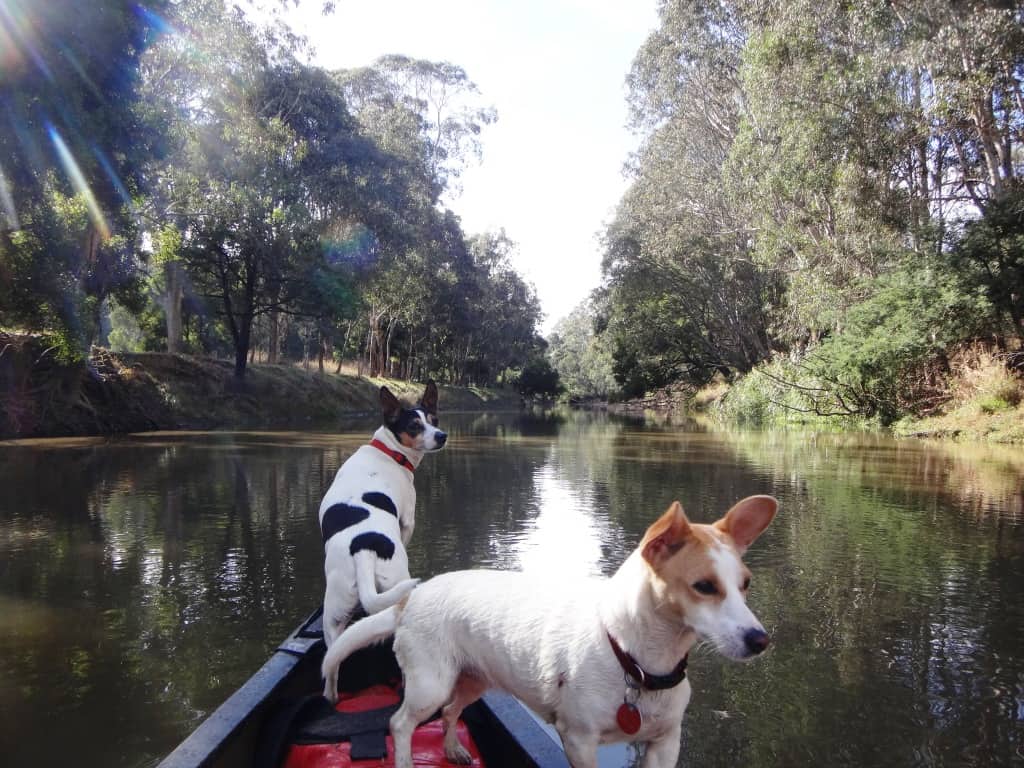
But you do have to watch out for the snags.
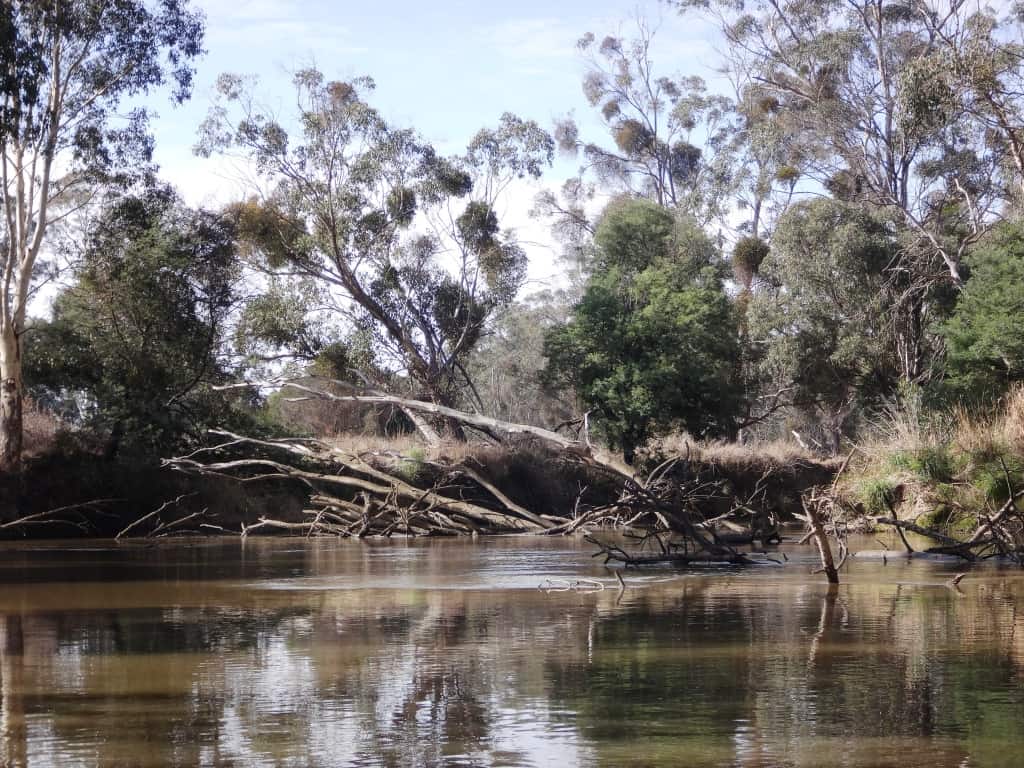
The vegetation changes. A bit over half way you start to get rushes and paper bark trees.
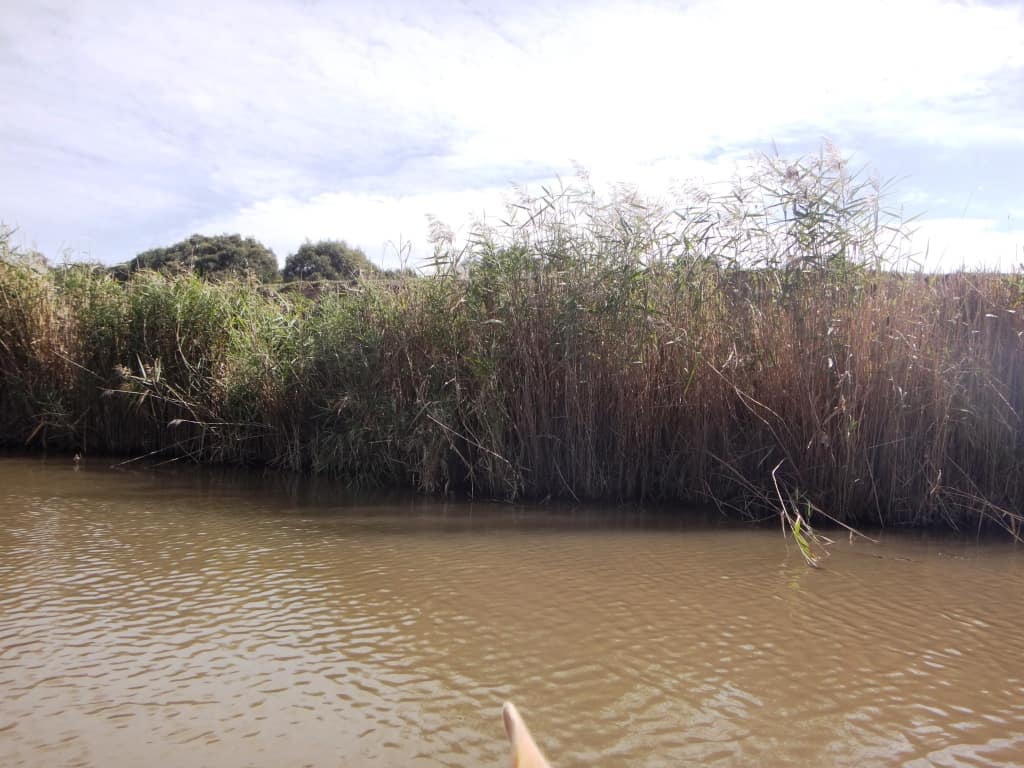
The banks become steeper.
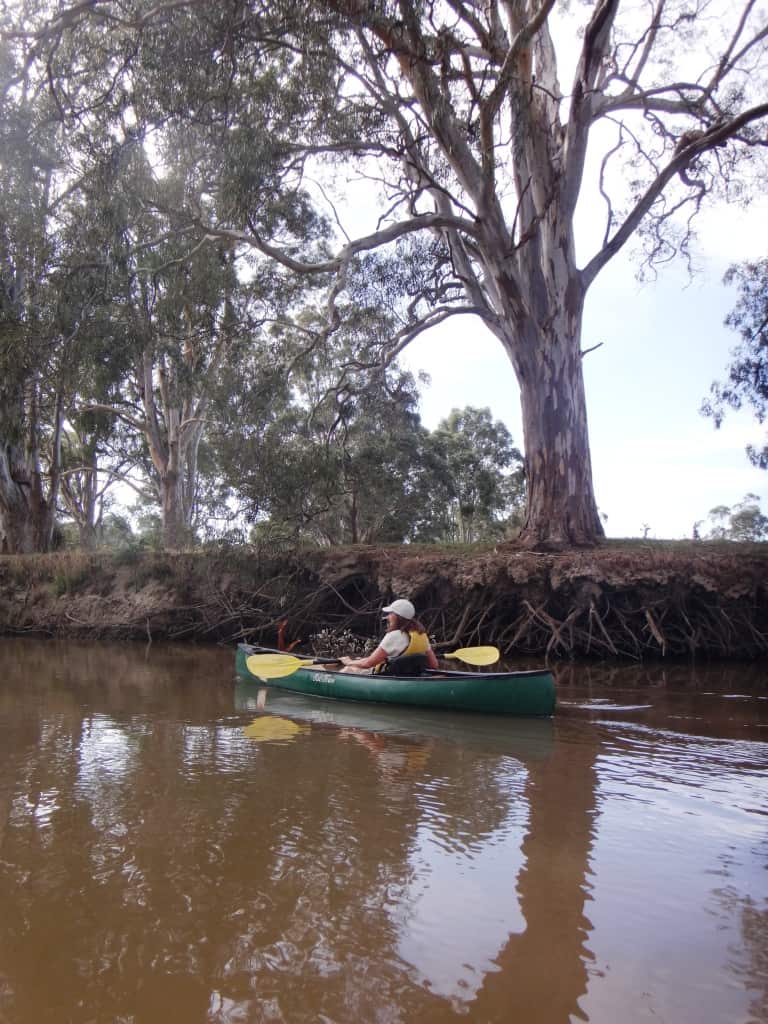
What a spread.
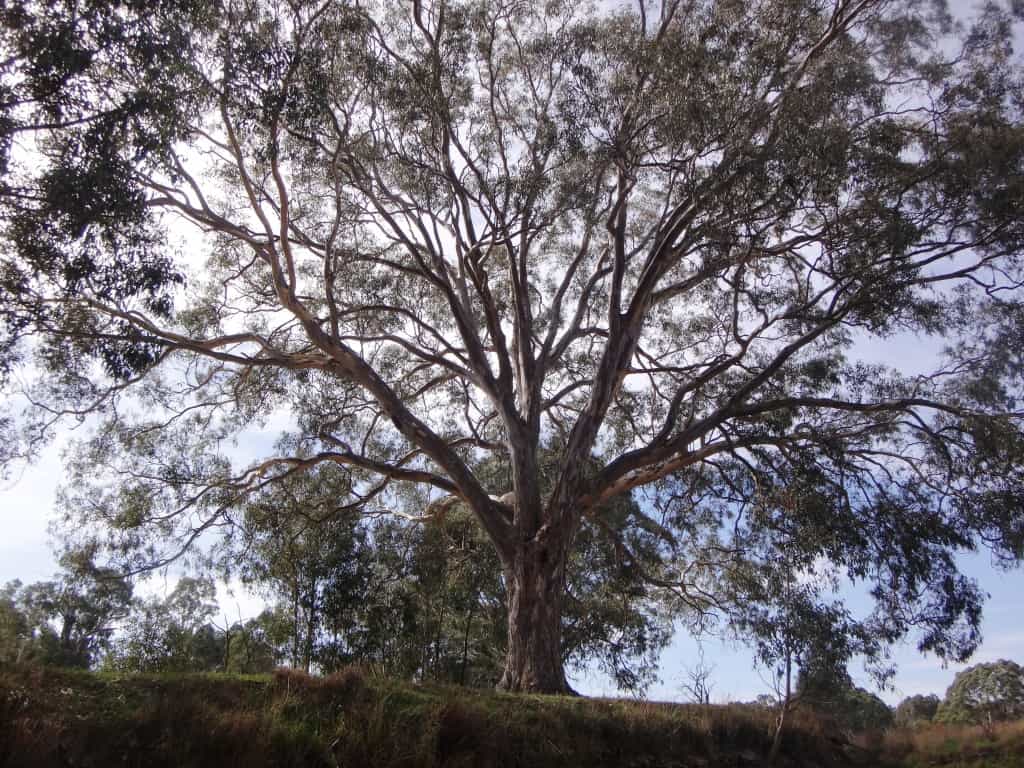
Lots of thought has gone onto the construction of these pump houses. This one does double duty for picnics.
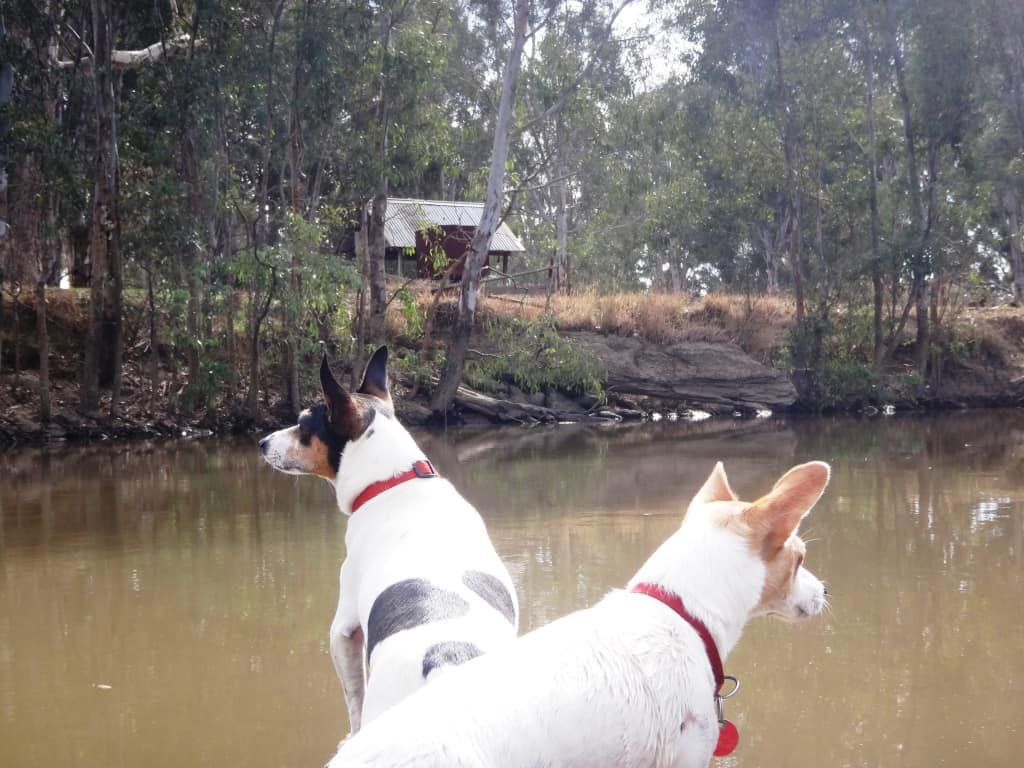
The reed beds thicken. You start to see (and hear) marsh warblers and lots of wrens.
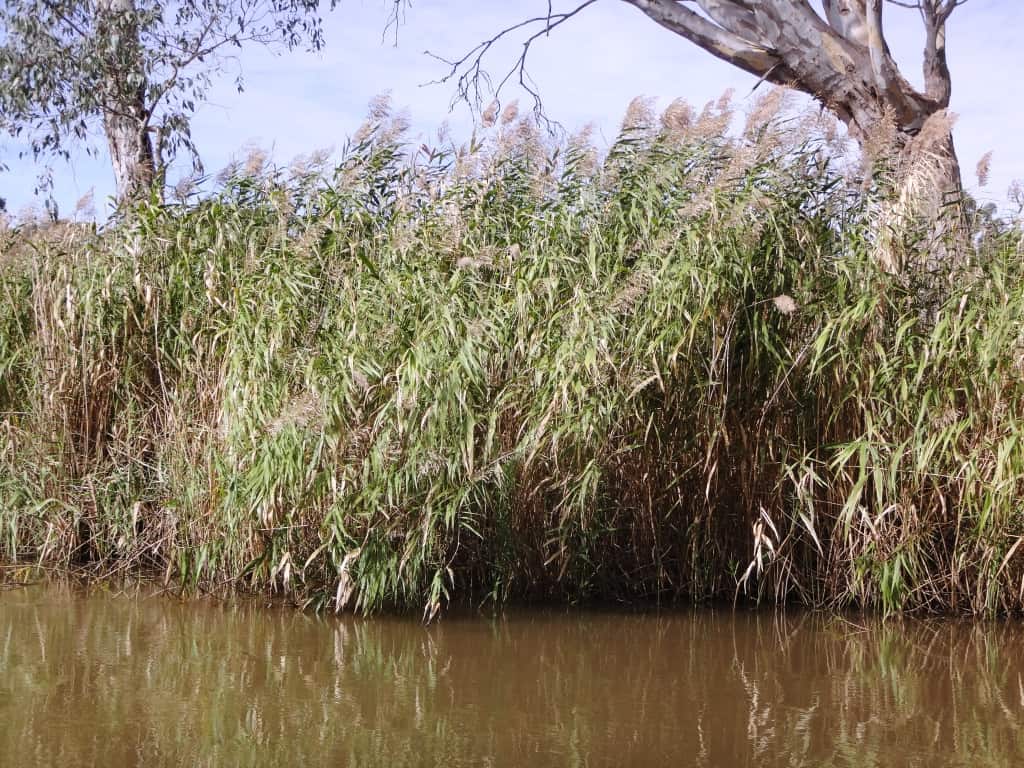
Most of the anabranches and billabongs are blocked off like this so that you don’t have to worry if you are going the wrong way (as the map might indicate you could)
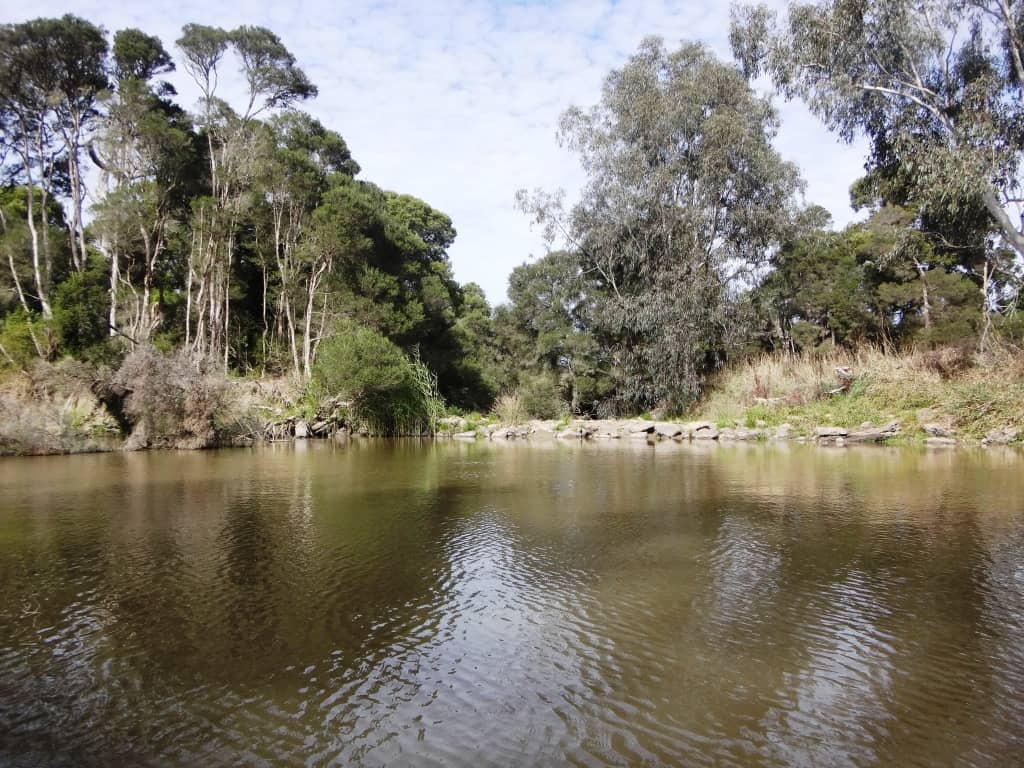
A fine strand of tea trees – people really did use an infusion from these as a substitute for tea.
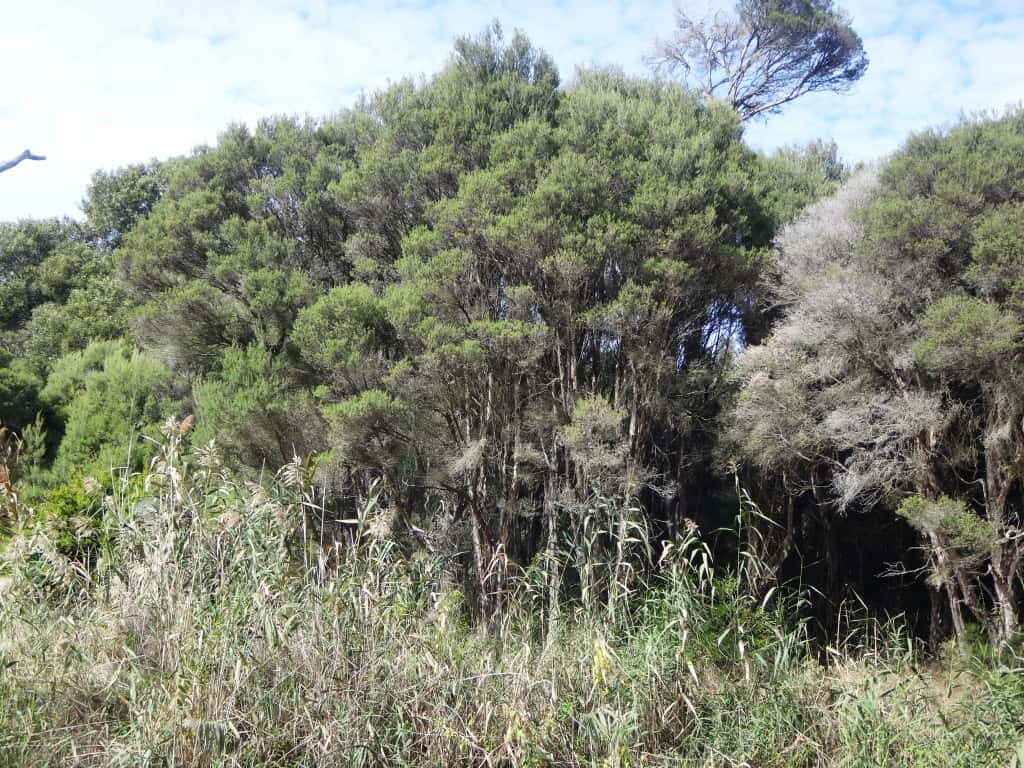
This is the junction – the only place you might think you are going the wrong way. Follow the current. It goes to the right.
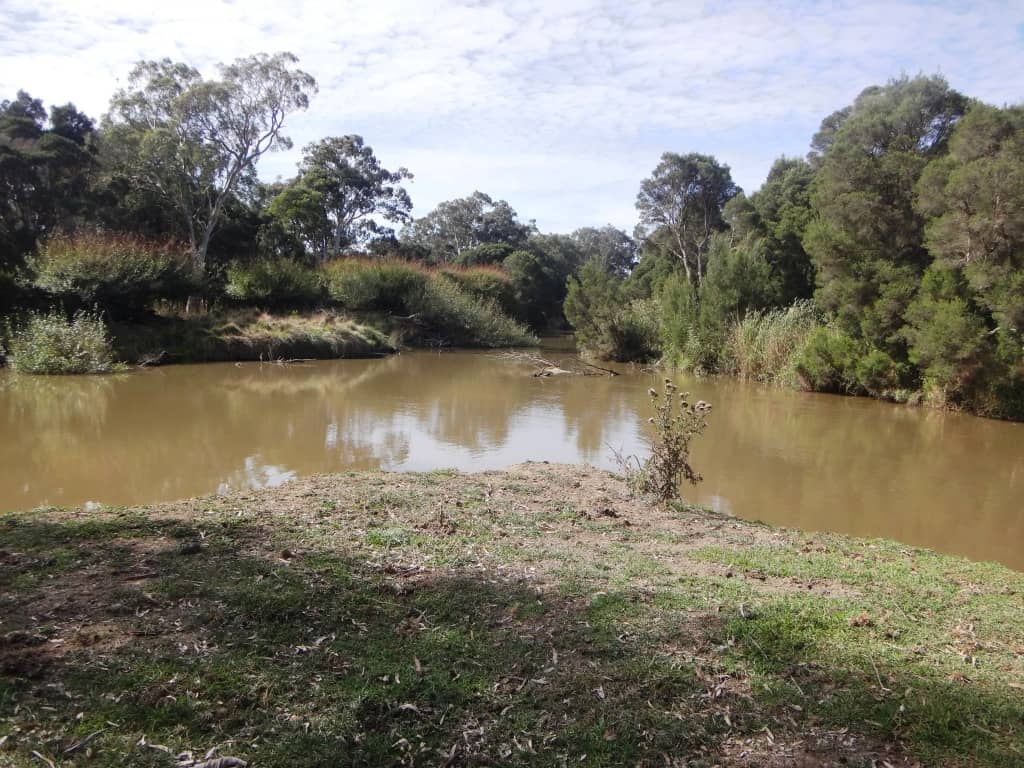
The junction would make a fine last camp site. It is nearly the last place you can get out of your boat. There is another closed off anabranch about half an hour further on your left. I suggest you have a spell there as you will be in your boat for 2/12-3 hours without a break after the junction.
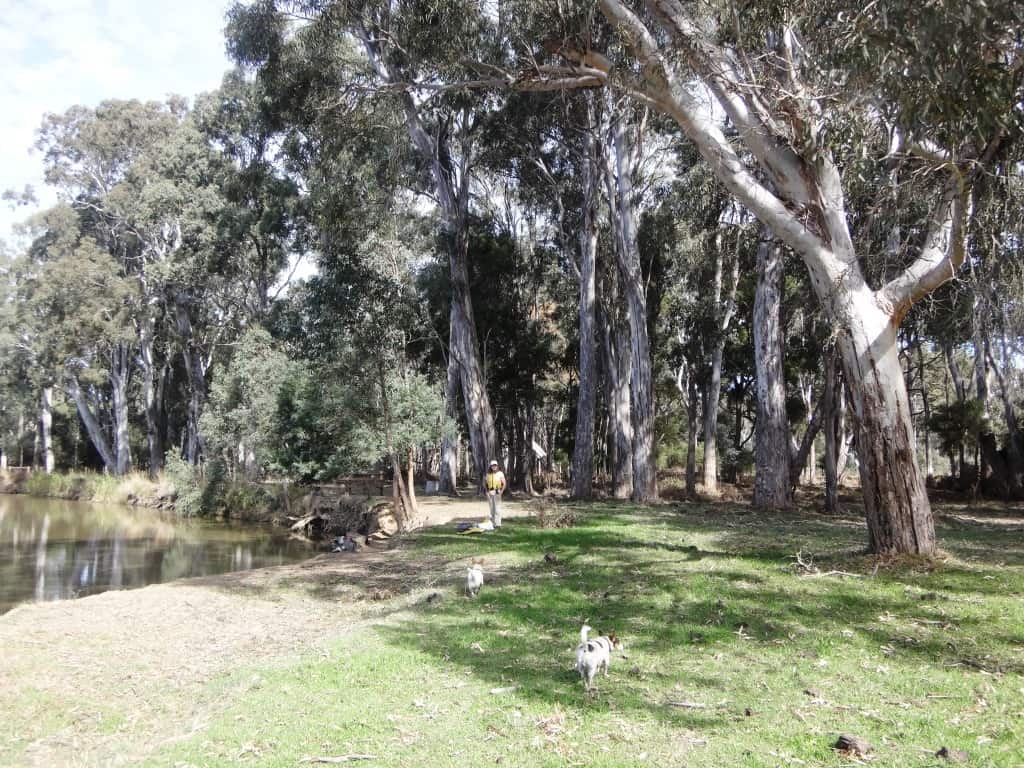
A fine flight of black ducks.
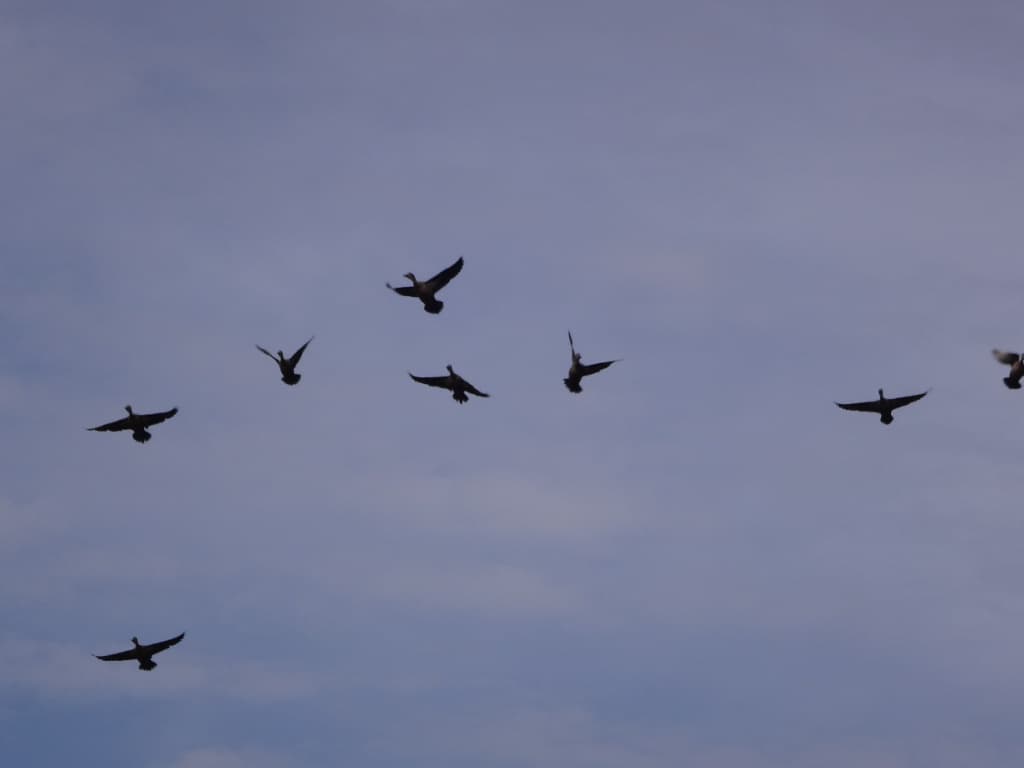
And a many trees full of straw necked ibis. These dead trees on the left bank must have been flooded by the river changing course. There does no seem to be any stock on this long ‘island’, but there are animals: kangaroos and deer.
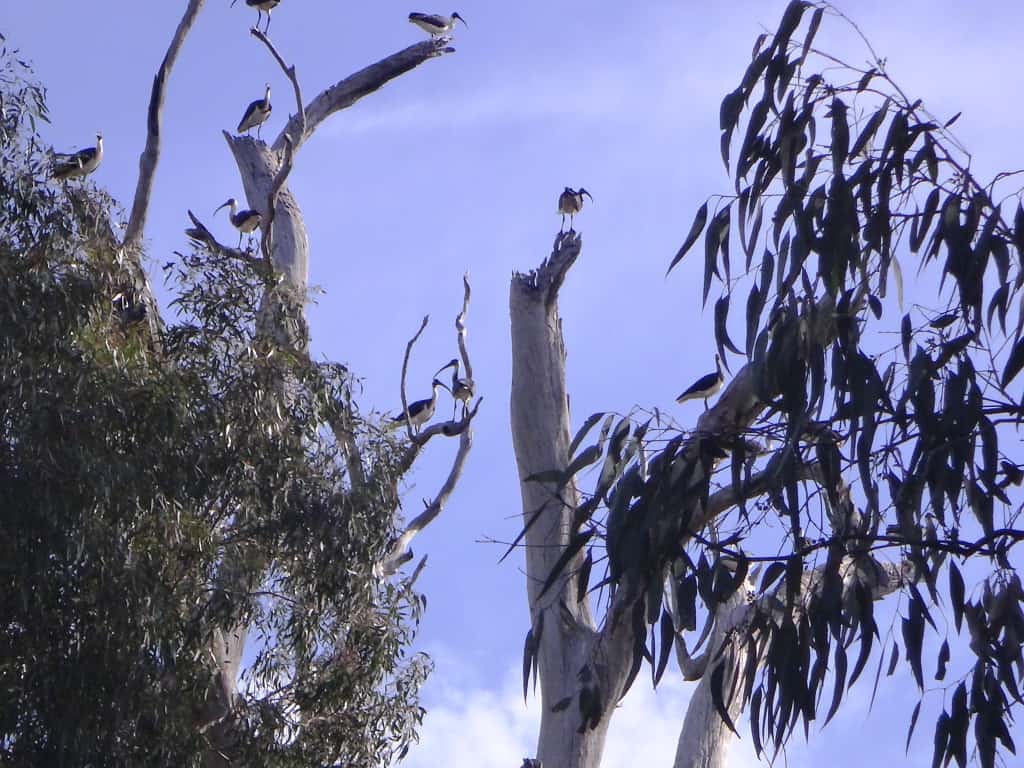
See how many dead trees there are behind the reed beds.
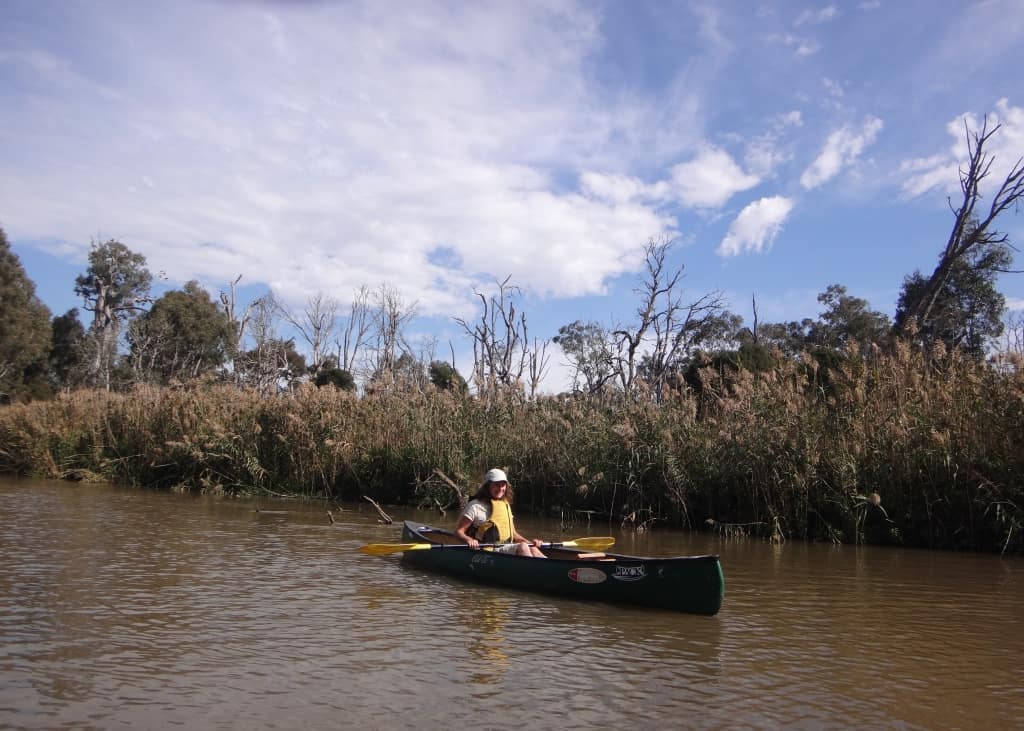
I just can’t help but admire the beauty of these river giants.
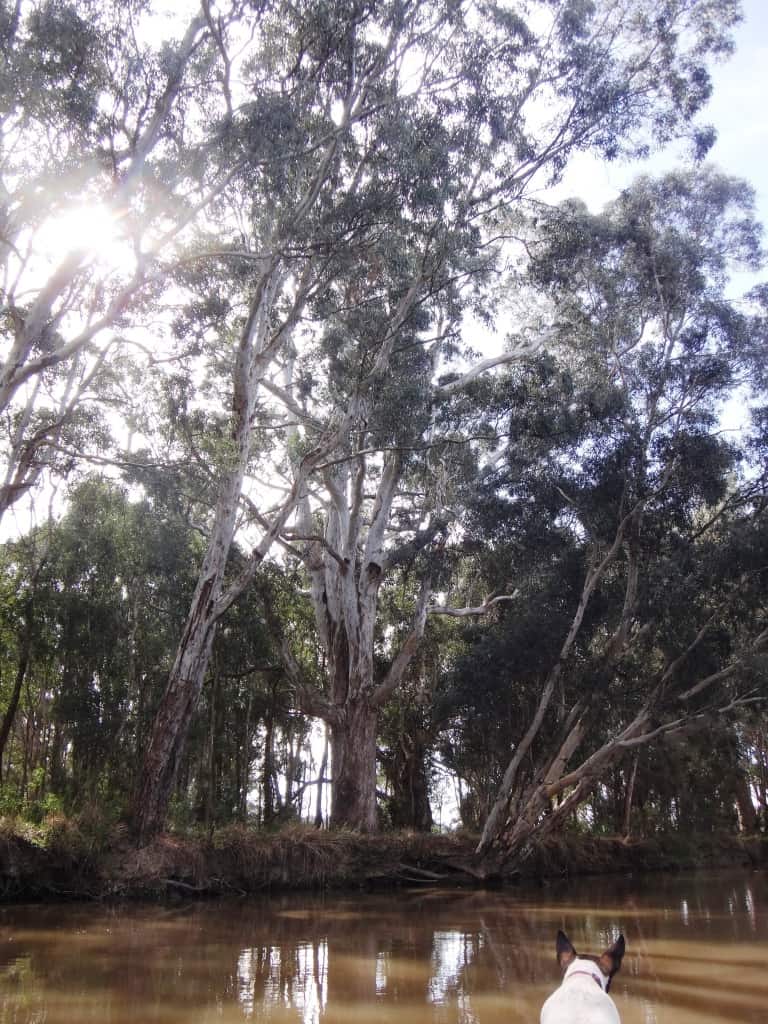
A tragedy here I suspect – an unsuccessful attempt to drain the flooded lost land.
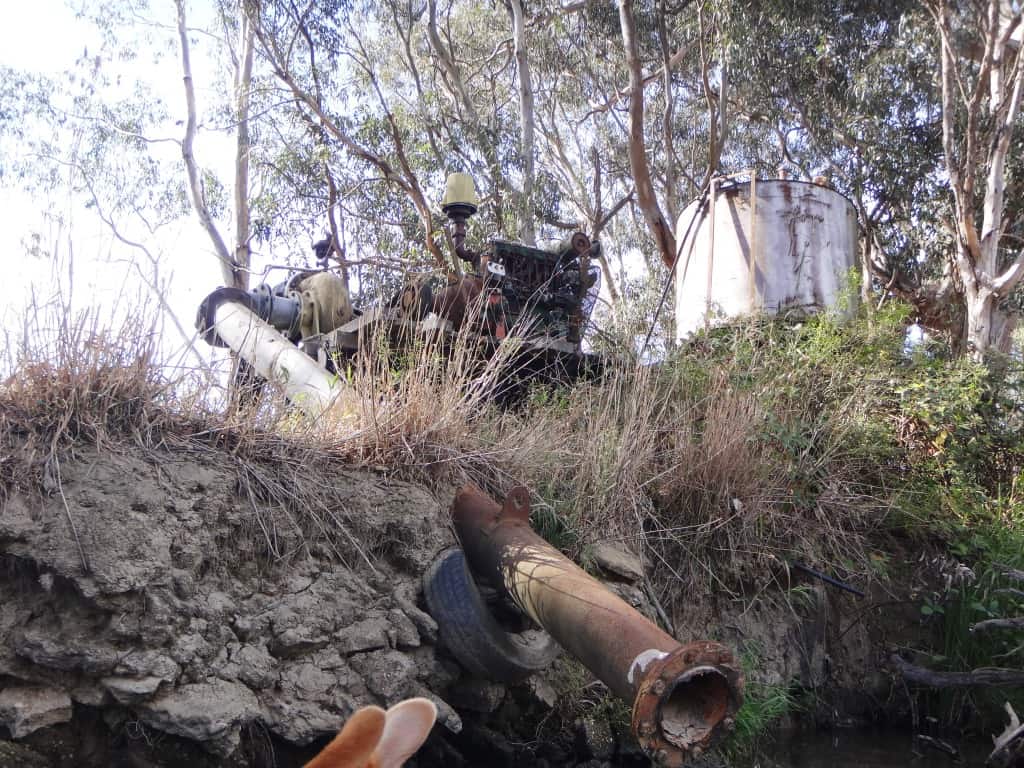
A sea eagle watches me going past.
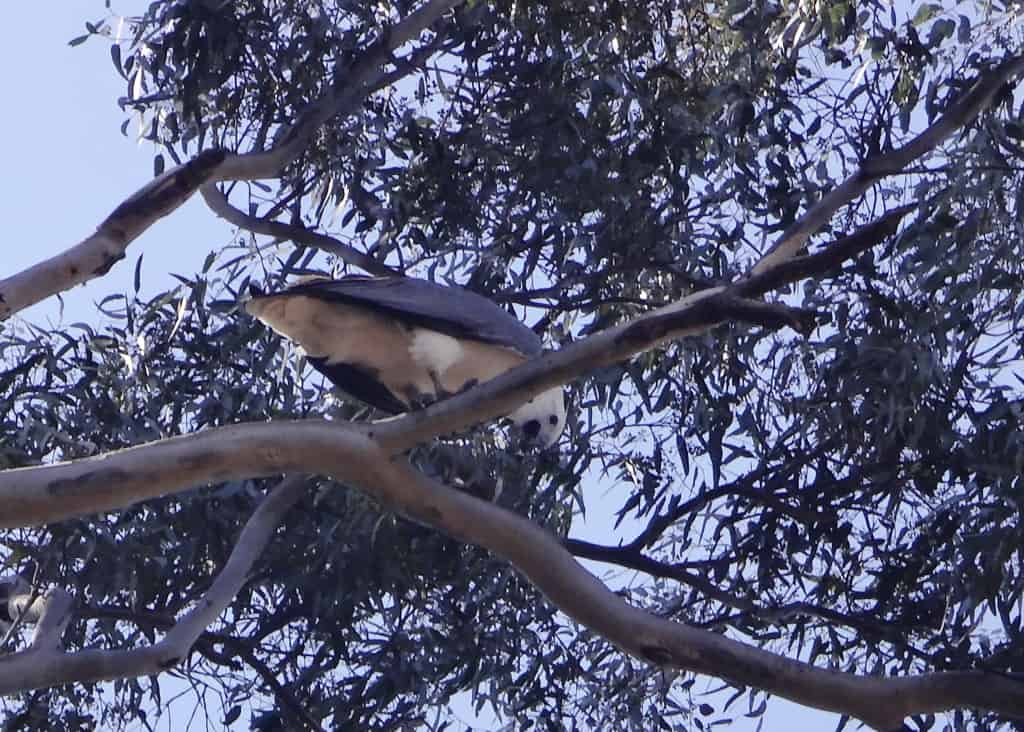
And Della snaps me practically leaning over backwards to take a photo of him.
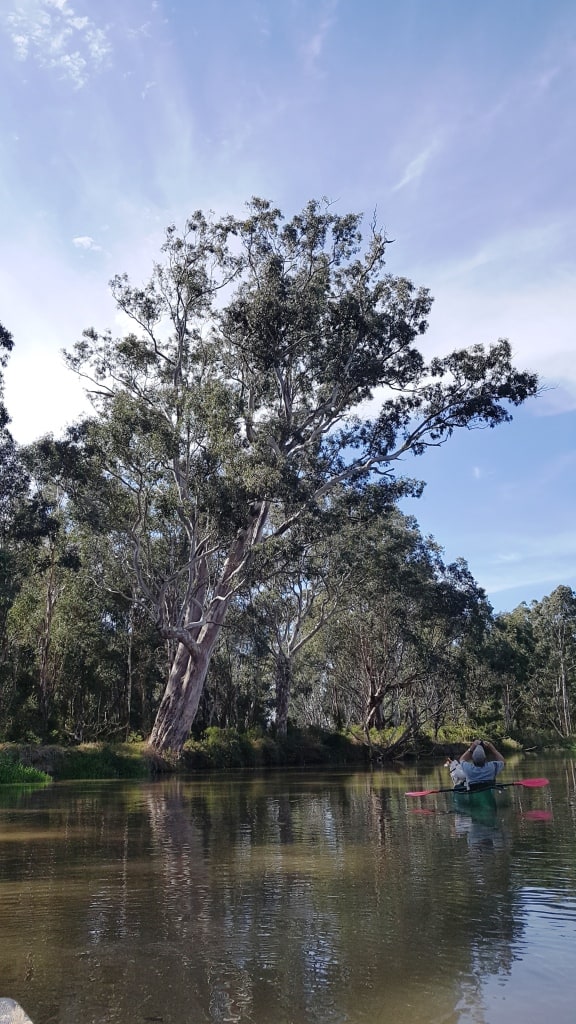
Google can do a pretty good job of a picture. I should run more of my pics by them. Google even knew where we were from the photo (Pearsondale). i had never heard of it but when I checked with Maps, it was right! Della has just sent me this version:It really makes the unedited version look pretty flat.
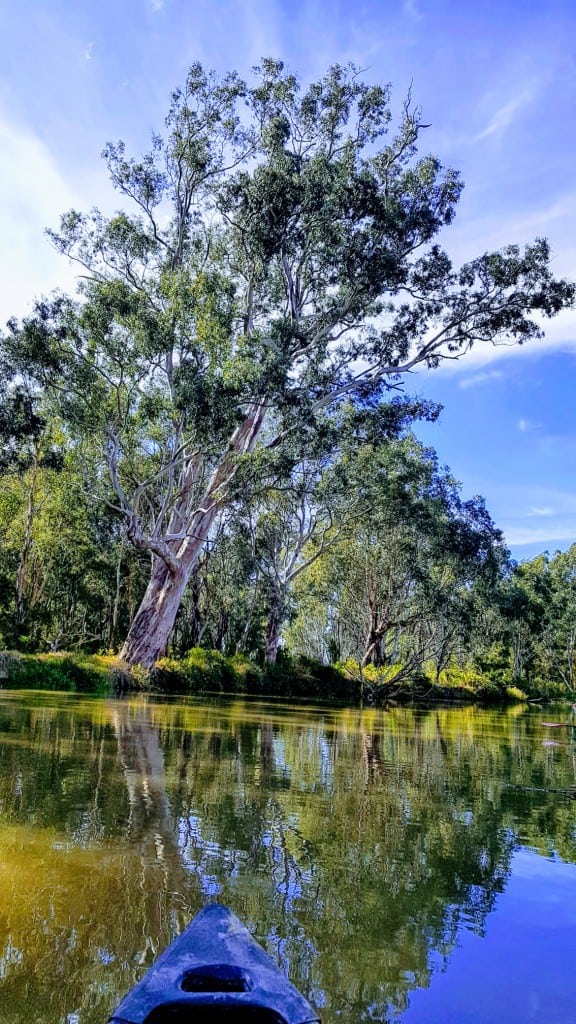
Sometimes the snags nearly block the river. From the junction down you cannot portage, so you may need to saw your way through sometimes. We were able to easily slip past every such tangle. You my need to be able to climb out of your boat onto a log, lift it over then climb back in. Pack rafters will have to watch out they do not puncture their boats on sharp branches.
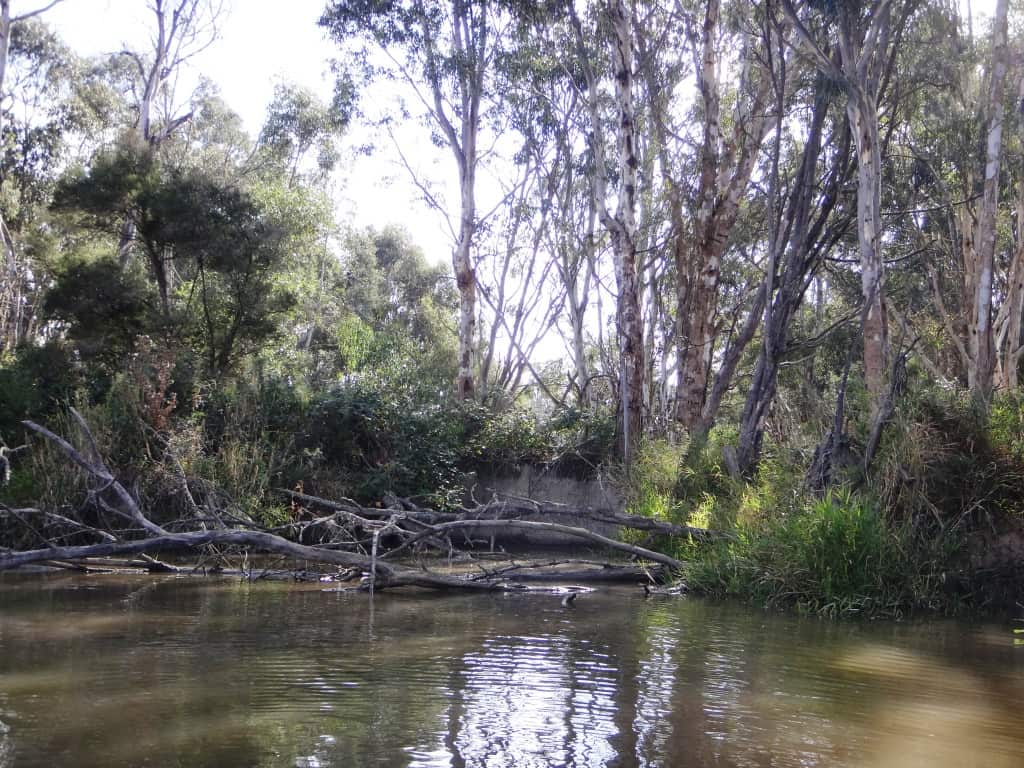
A lost giant of the river.
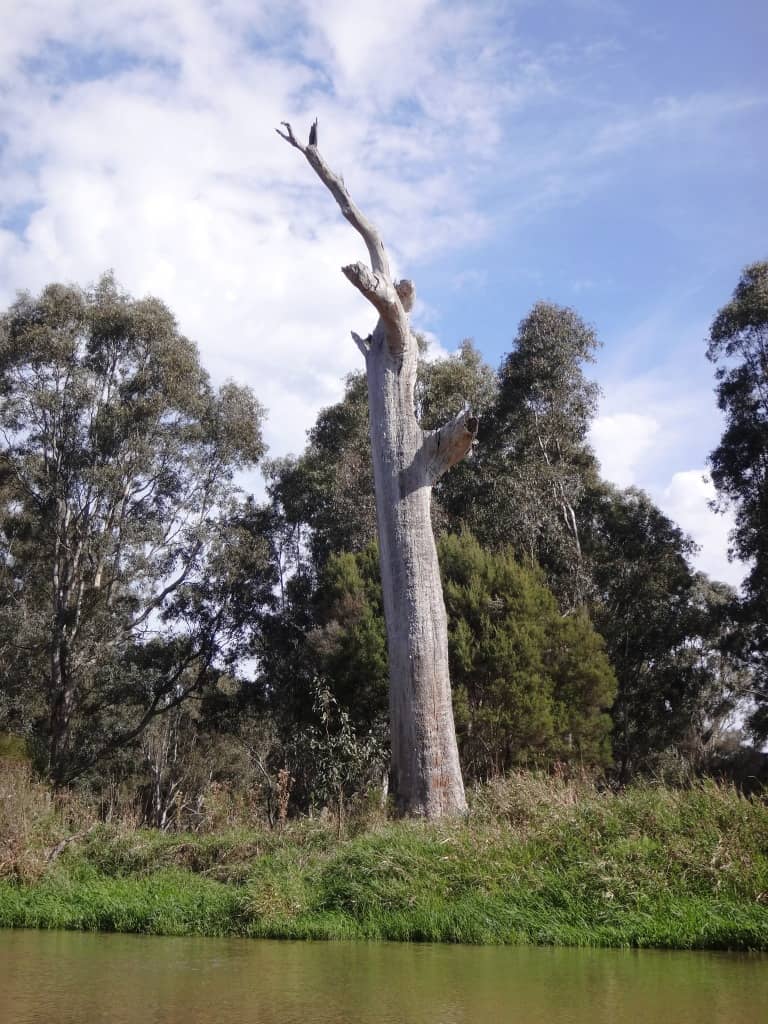
How many critters call this beauty home?
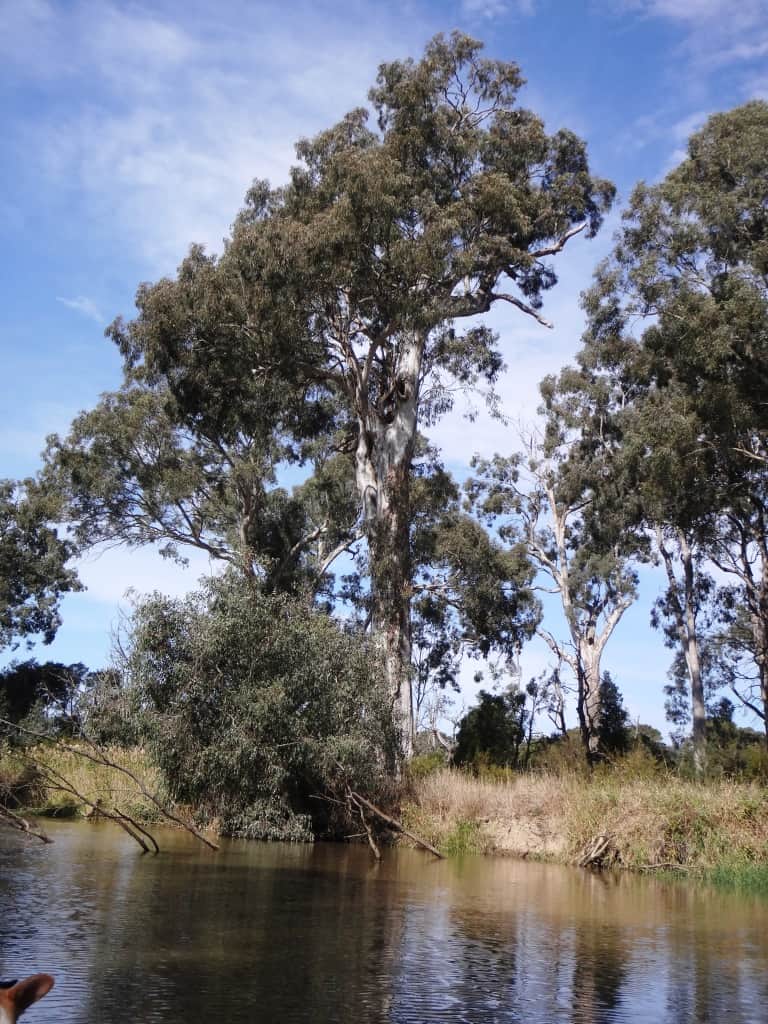
The river flattens out and the banks become lower, but still perpendicular. You are not getting out of your boat along here.
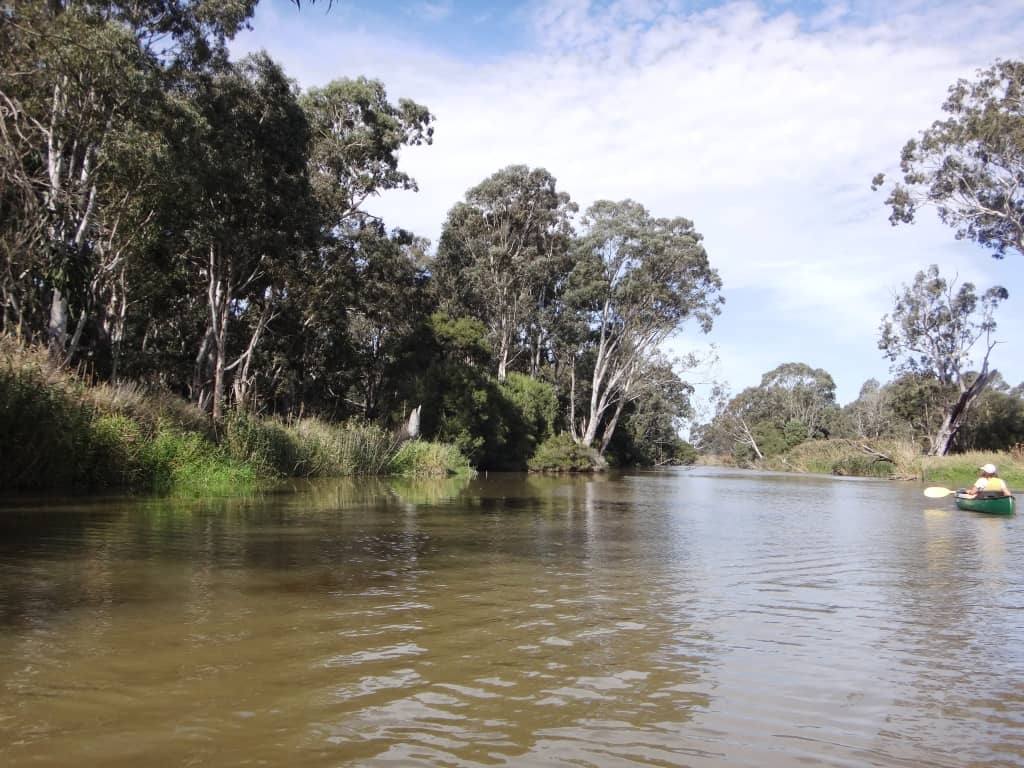
Spot would like a run too.
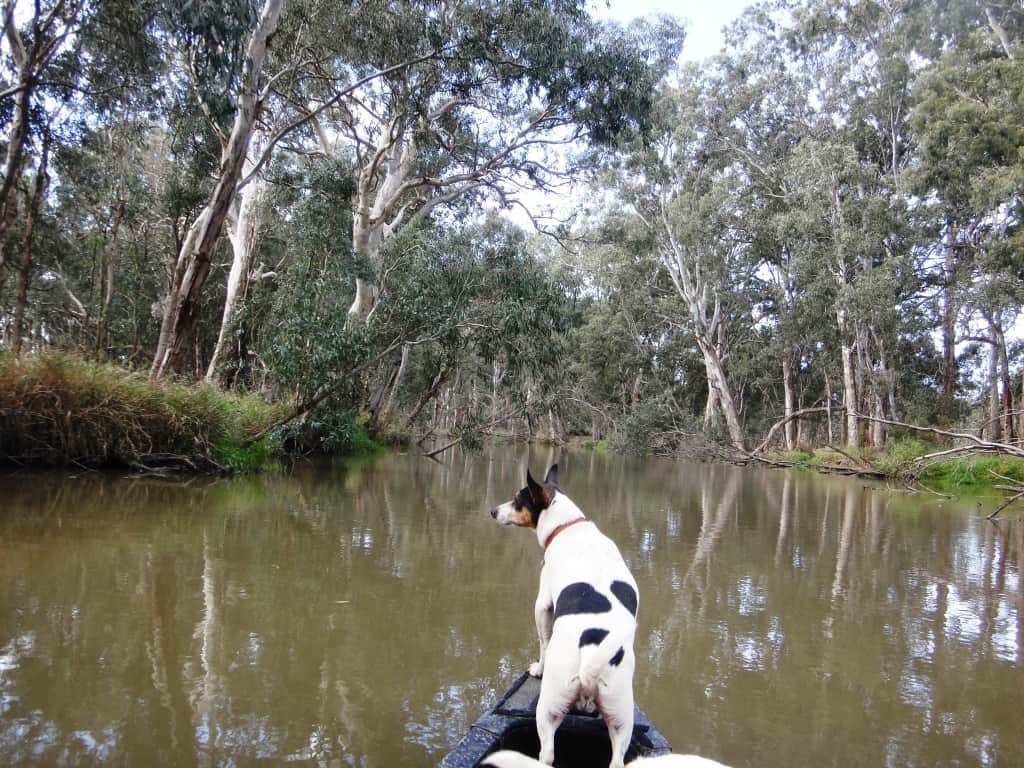
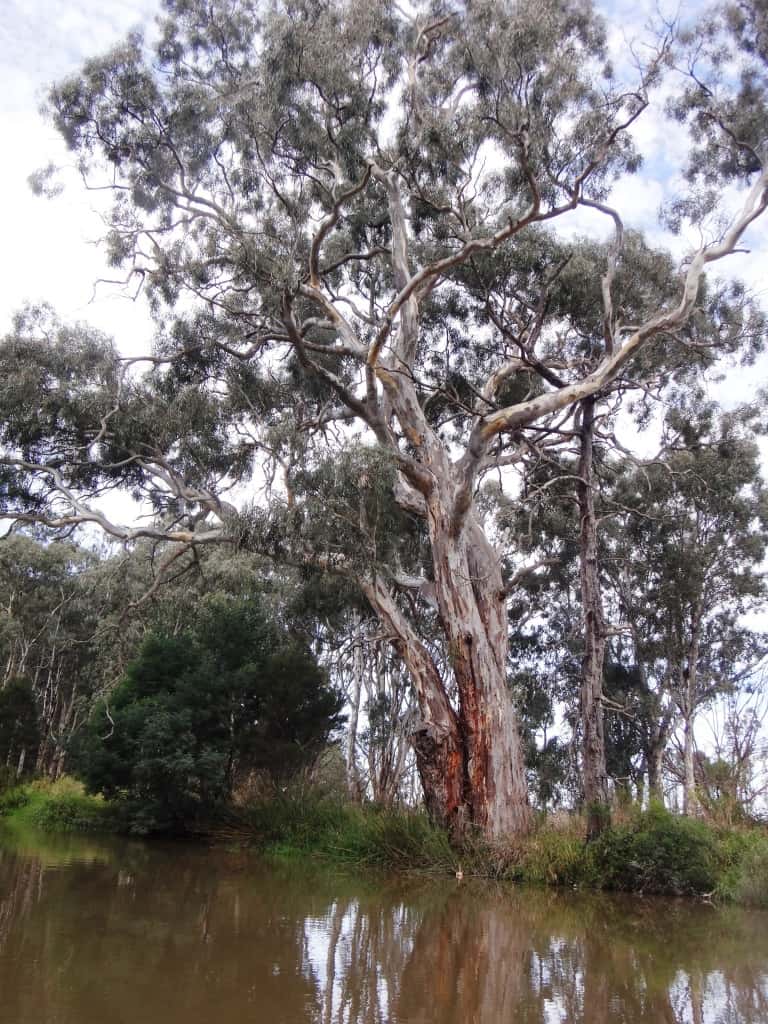
This $2,000 Hereford has slipped off the bank and been unable to get back into the paddock. If he could not, how much chance would you have? Be careful not to fall out.
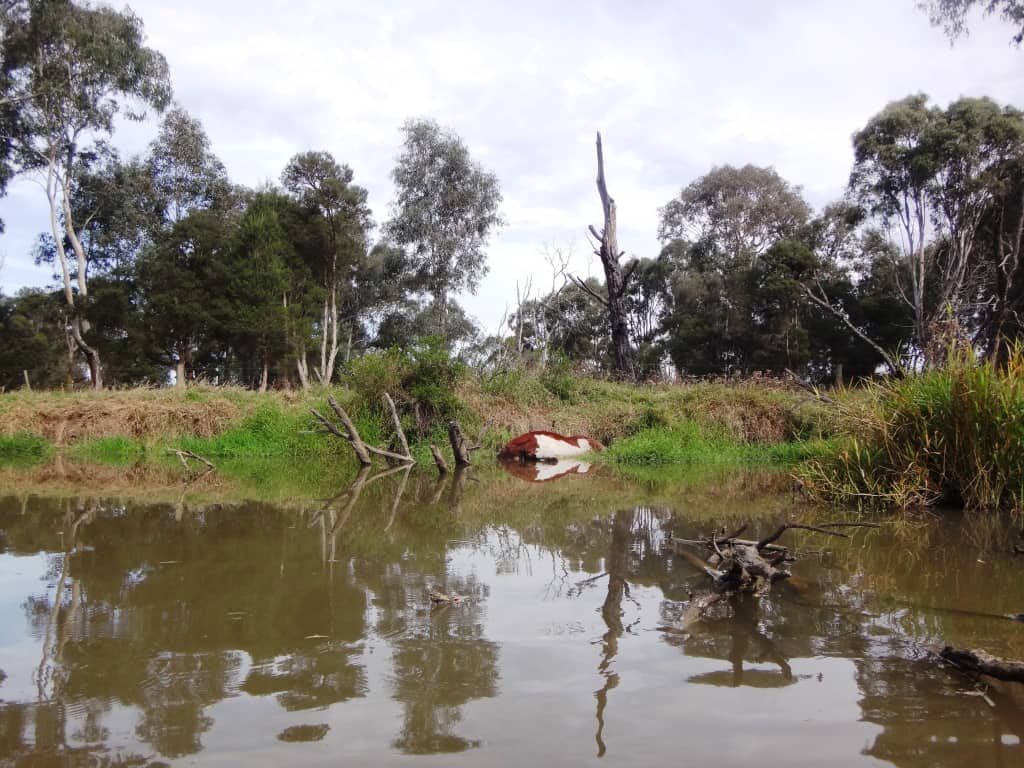
Longford Bridge is just around the corner now – and journey’s end for us. We will do this trip again though, spending a bit more time exploring and fishing next time. I would go again over easter but we are working in our daughter’s shop – the Yinnar General Store. Drop in for a chat!
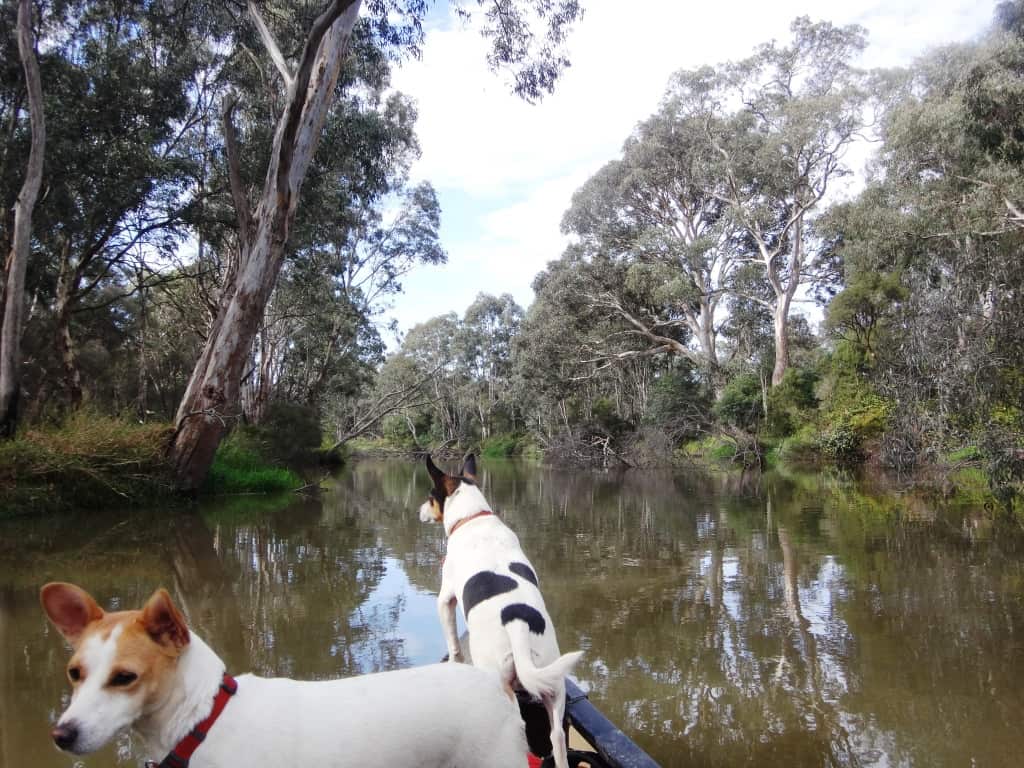
The water release information can be found here: https://www.wgcma.vic.gov.au/our-region/waterways/current-environmental-water-releases
You will notice (at 18/4/2019) that the releases will continue all over Easter and until the end of the following weekend. Now is definitely the time to canoe this river!
The River Heights information can be found here: http://www.bom.gov.au/cgi-bin/wrap_fwo.pl?IDV60154.html I have nominated the height at Rosedale (eg 1.0 metres). The equivalent height at Kilmany South is approx 2.2 metres.
Other great Gippsland rivers: eg the Thomson and the Wonnangatta.
PS: As you will see from this post my recovery from the back operation is proceeding slowly but I am getting there. Of course there is a back-log of jobs around the farm to catch up on, but every now and then it is great to get out and about having fun. Expect more adventures in the near future though.
PPS: There is nearly a week’s canoeing upstream of Thom’s Bridge on the Latrobe putting in at the Toorongo Bridge at Noojee. The first two-three days are through beautiful serene forest. With the release of water from Blue Rock the Tanjil should be canoeable from there to the Latrobe River confluence.
See Also: Messing About in Boats

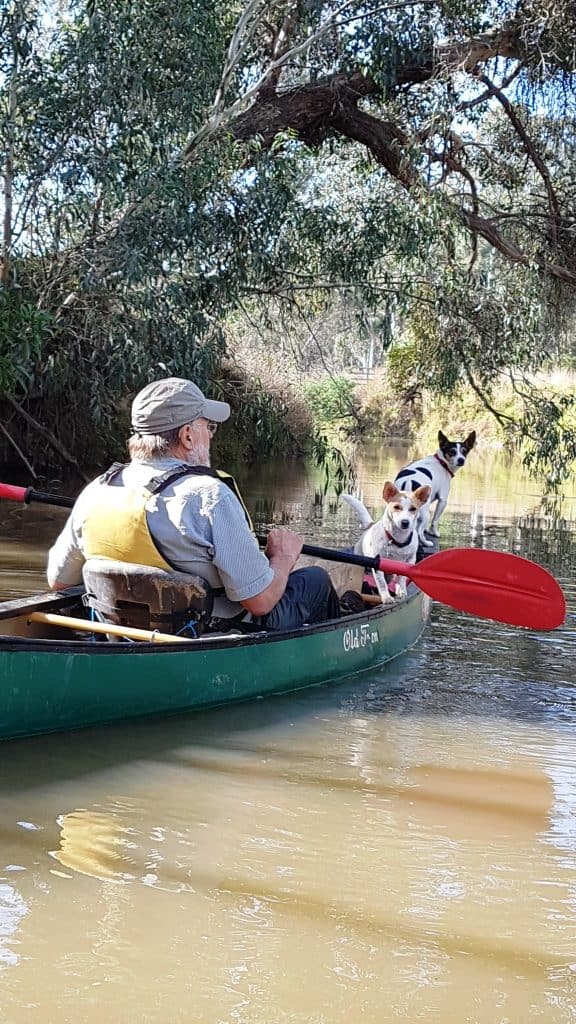
Hi Steve, Great story and information. It will be worth a trip some time.
Thanks,
Tim
The Latrobe is a very easy river, but this summer was just about the only one with any water. I still want to take my wife on the upper Wonnangatta next summer (and I plant doing the Snowy myself. being 70 should not deter me too much: https://www.theultralighthiker.com/2017/11/20/pack-rafting-the-remote-wonnangatta/
Keep it up, will follow your foot steps on some of your journeys.
Cheers Muzza.
Thanks Muzza – have a crack at the Latrobe over the next week while the water is there.